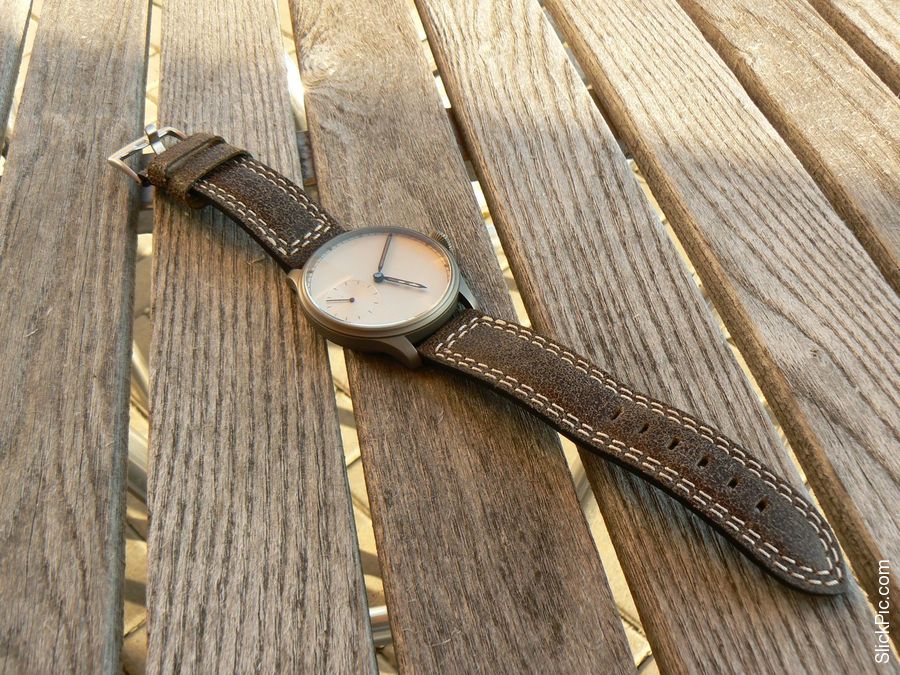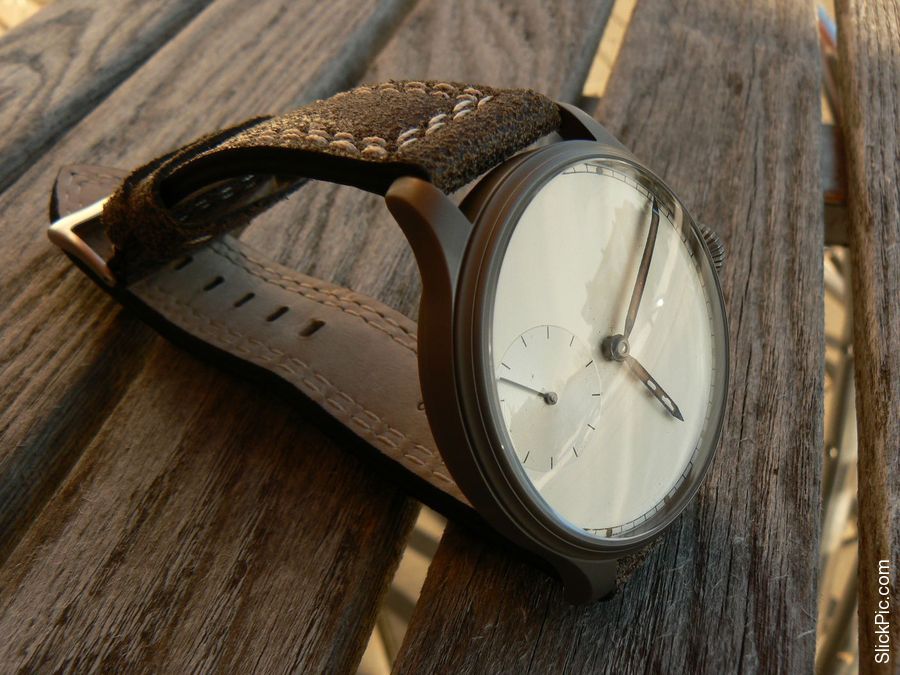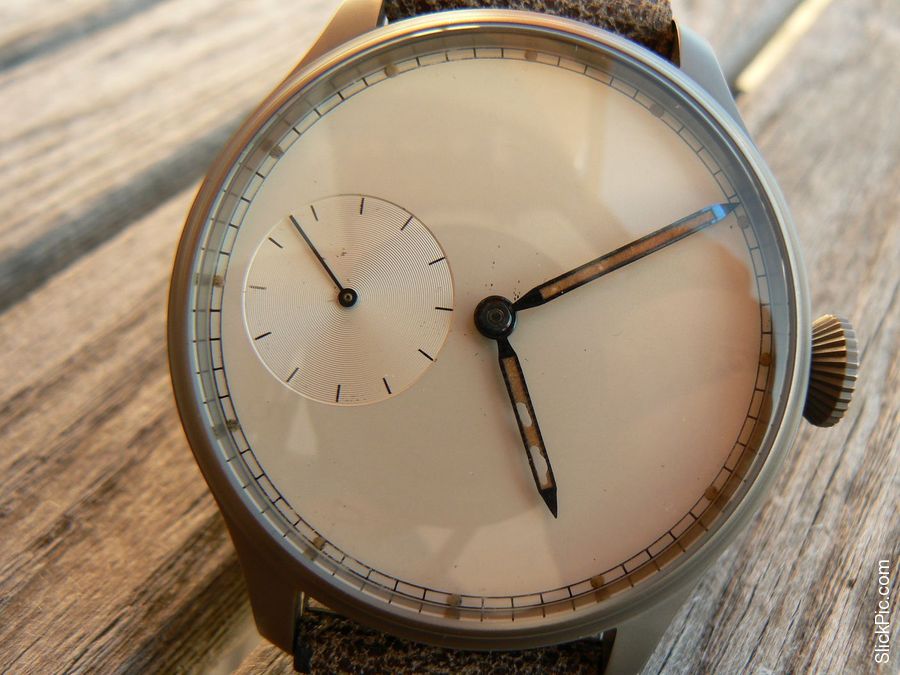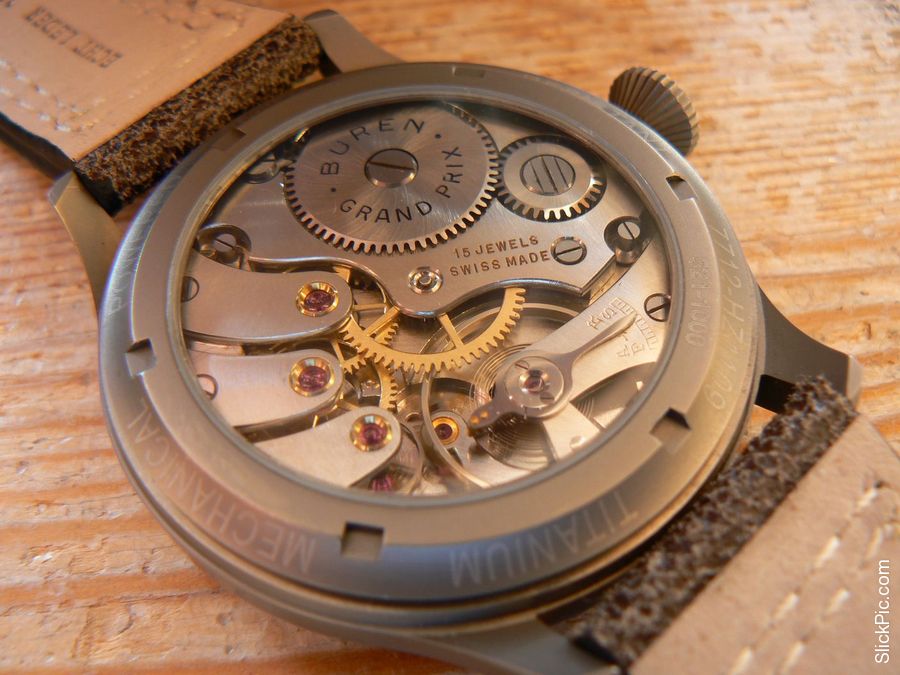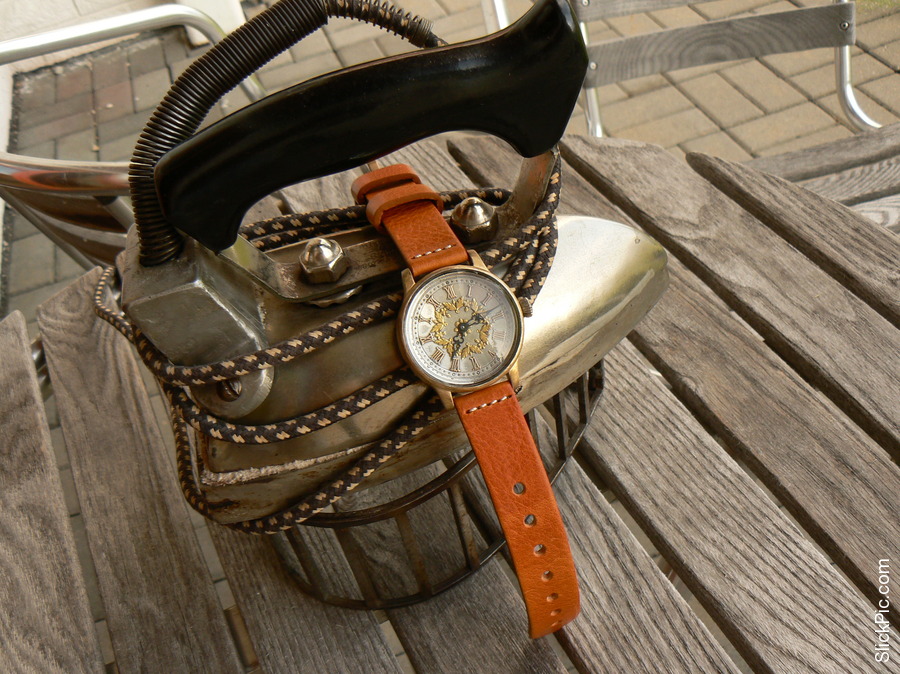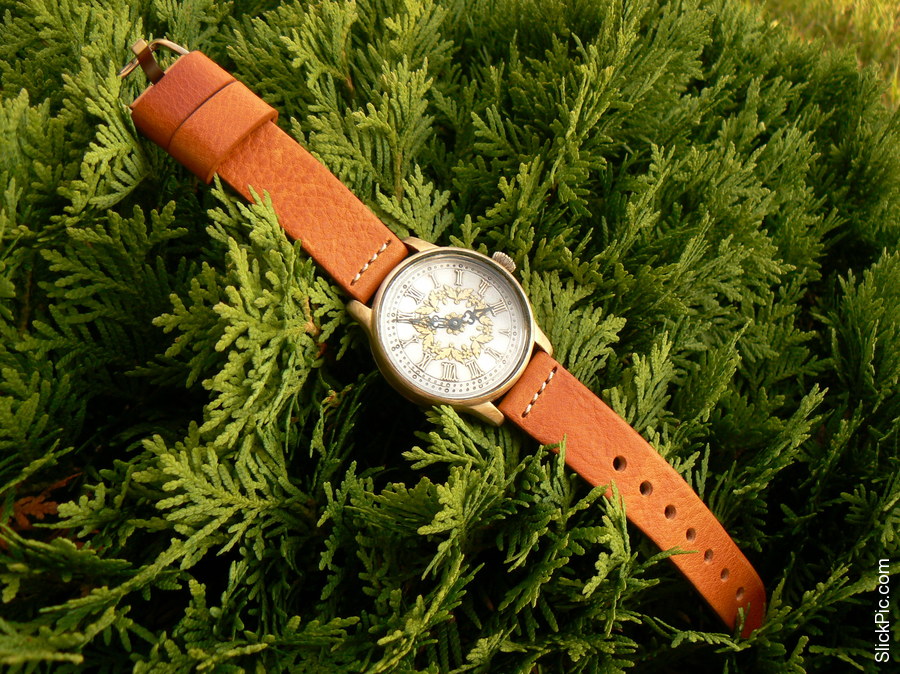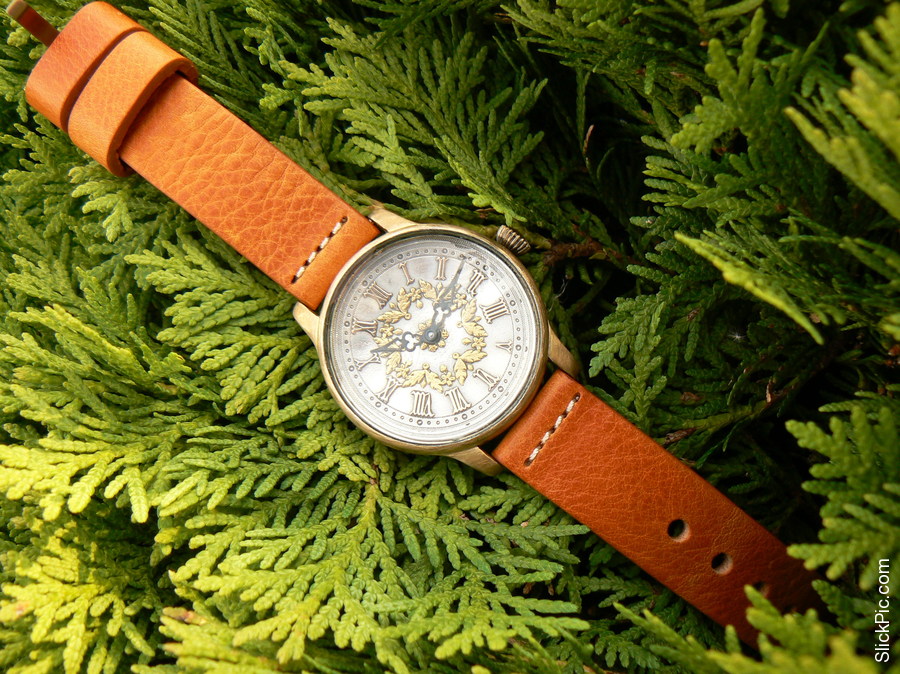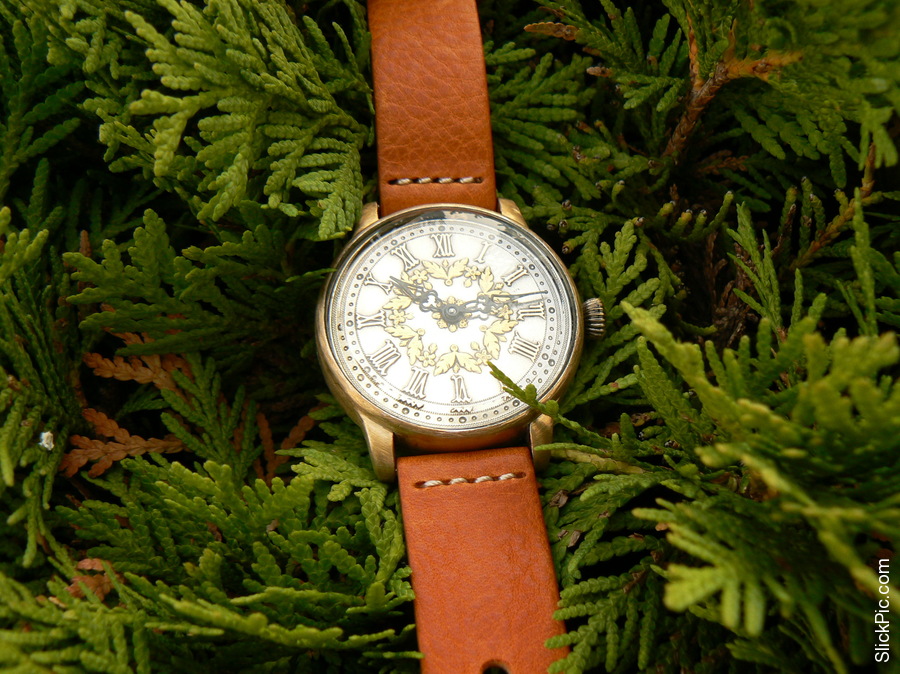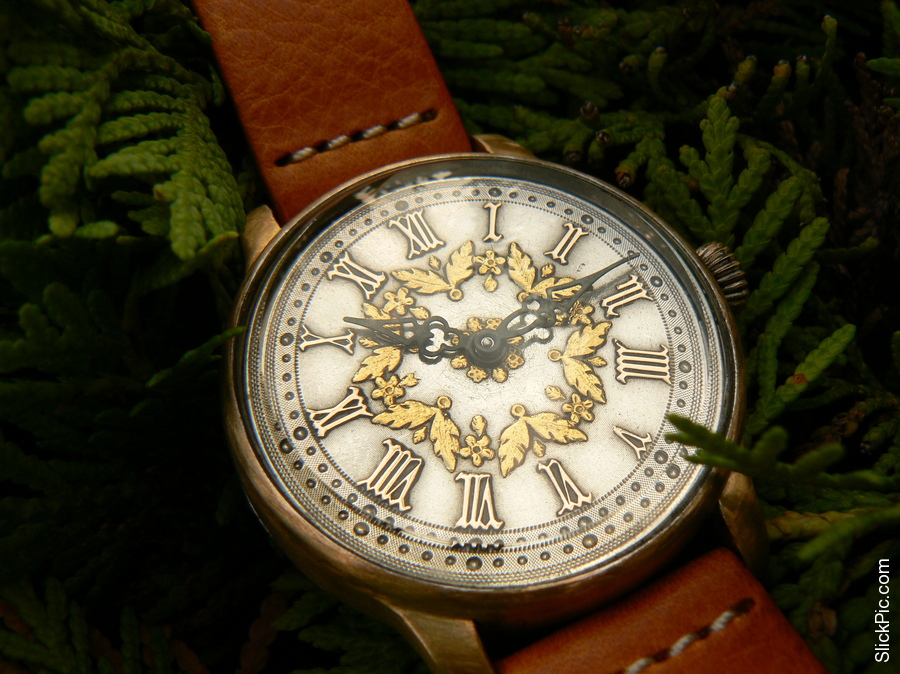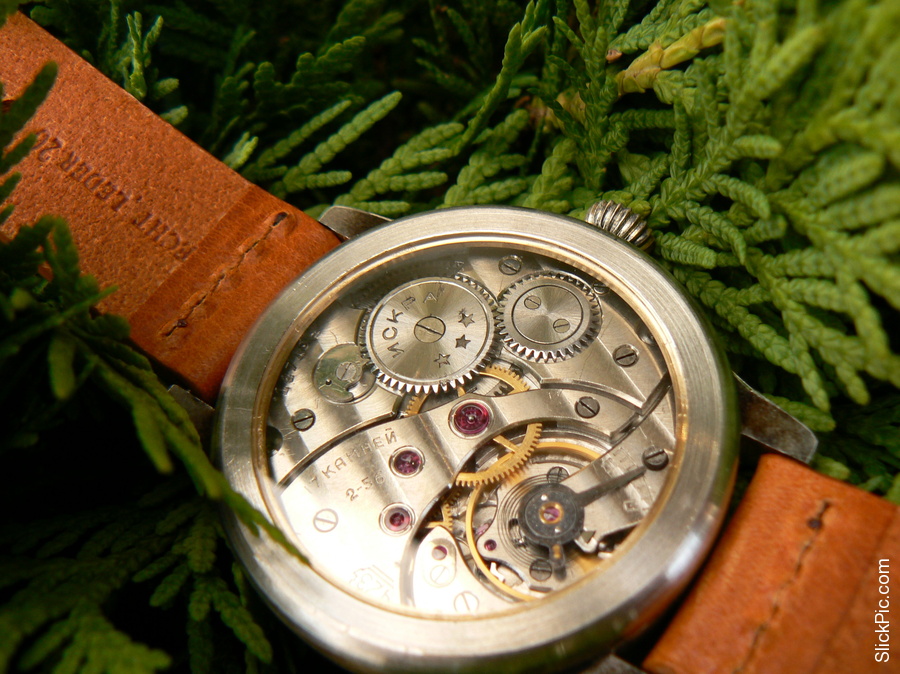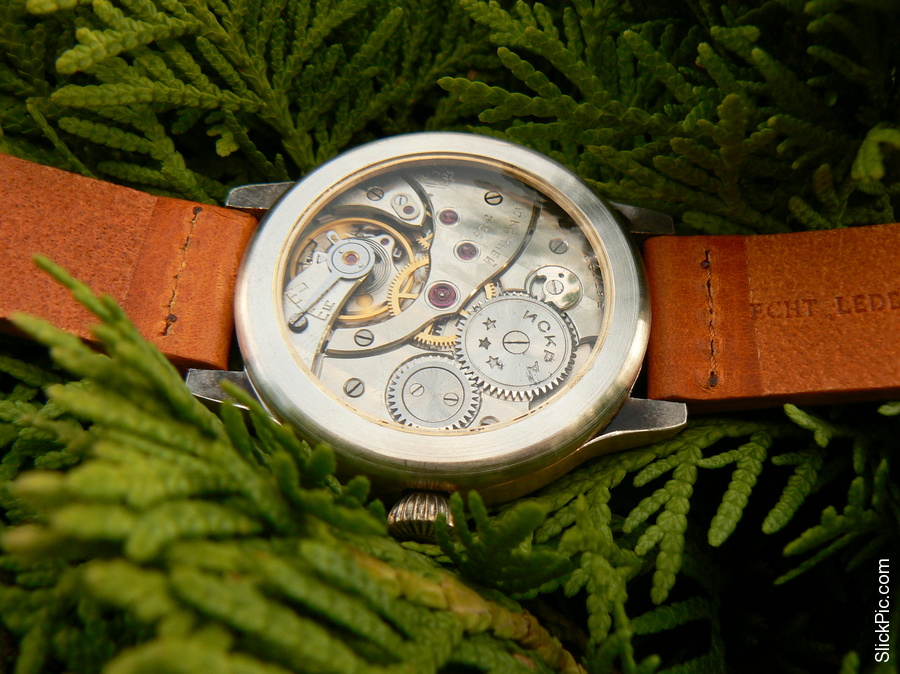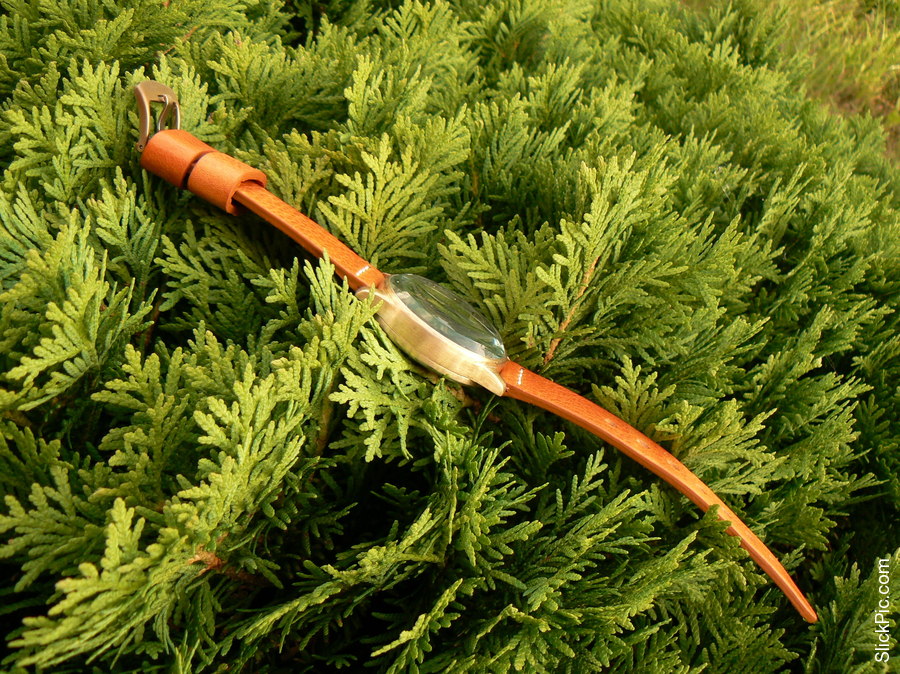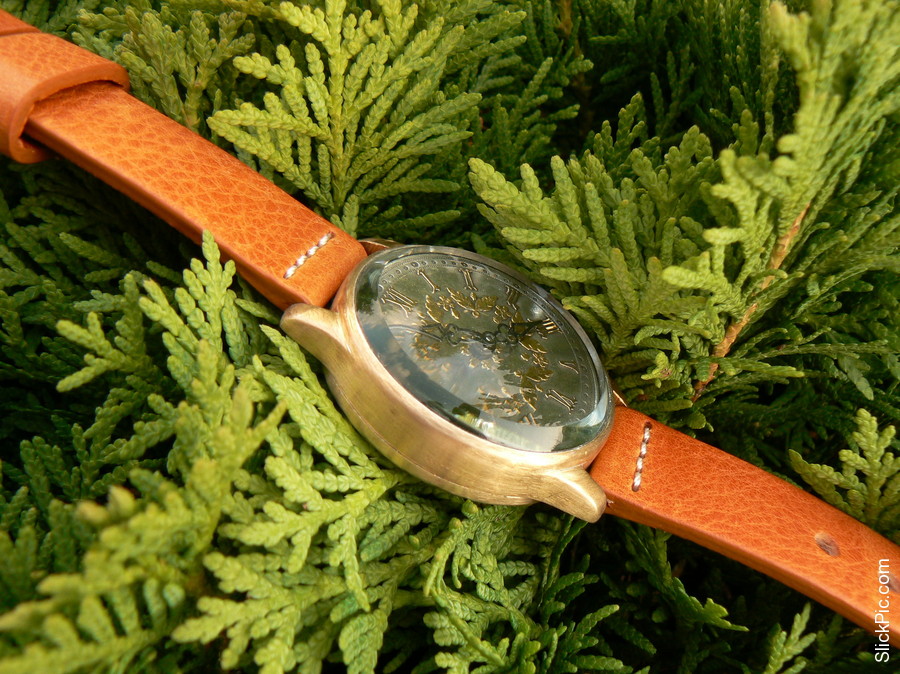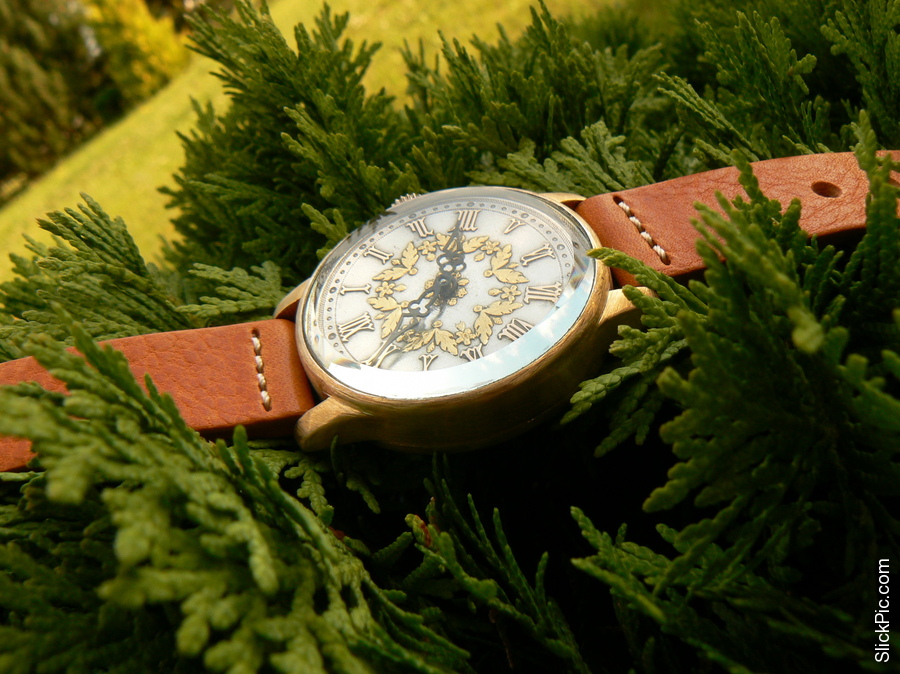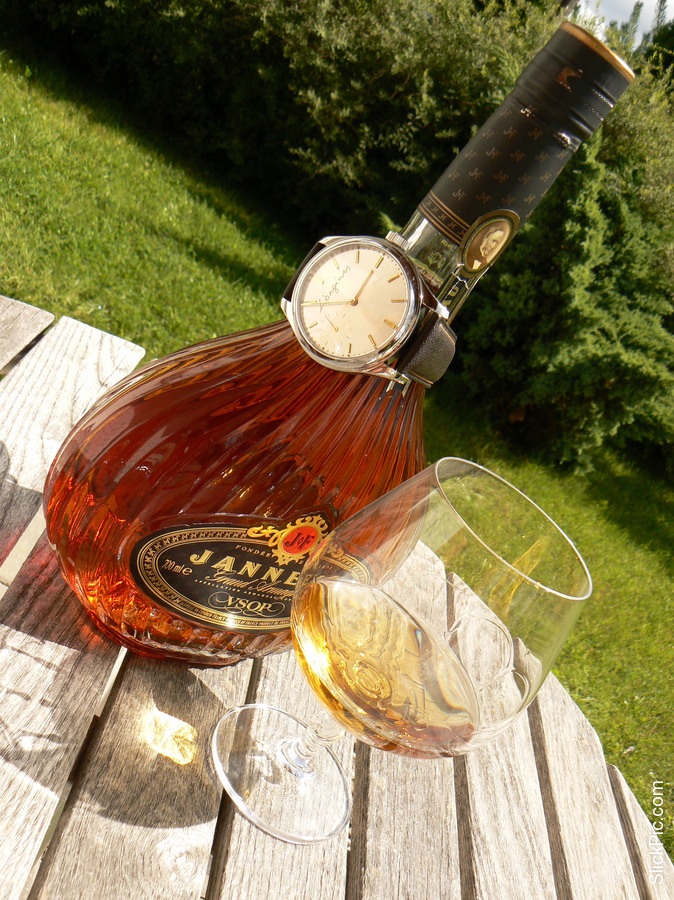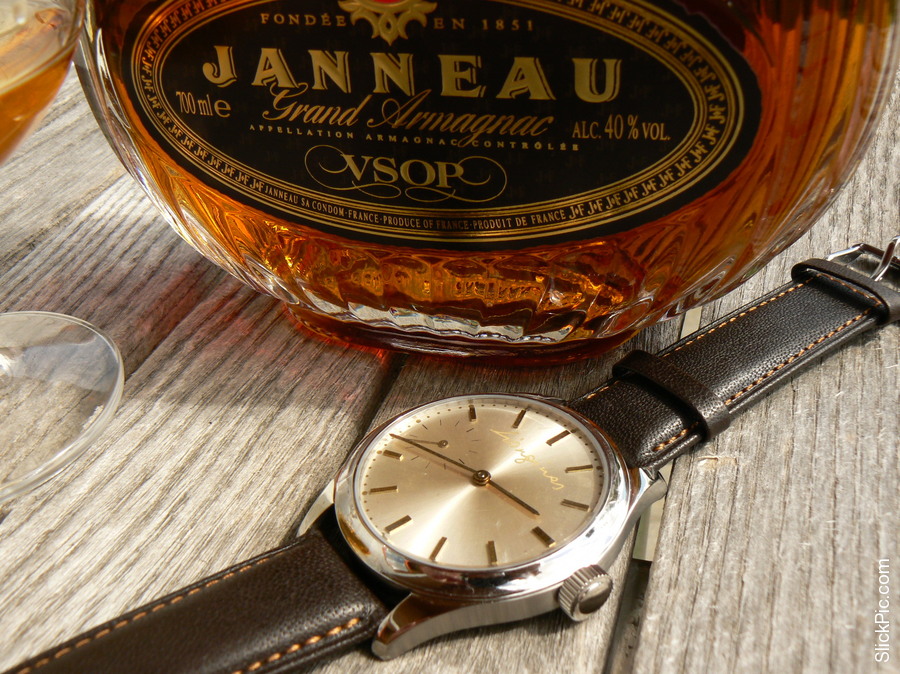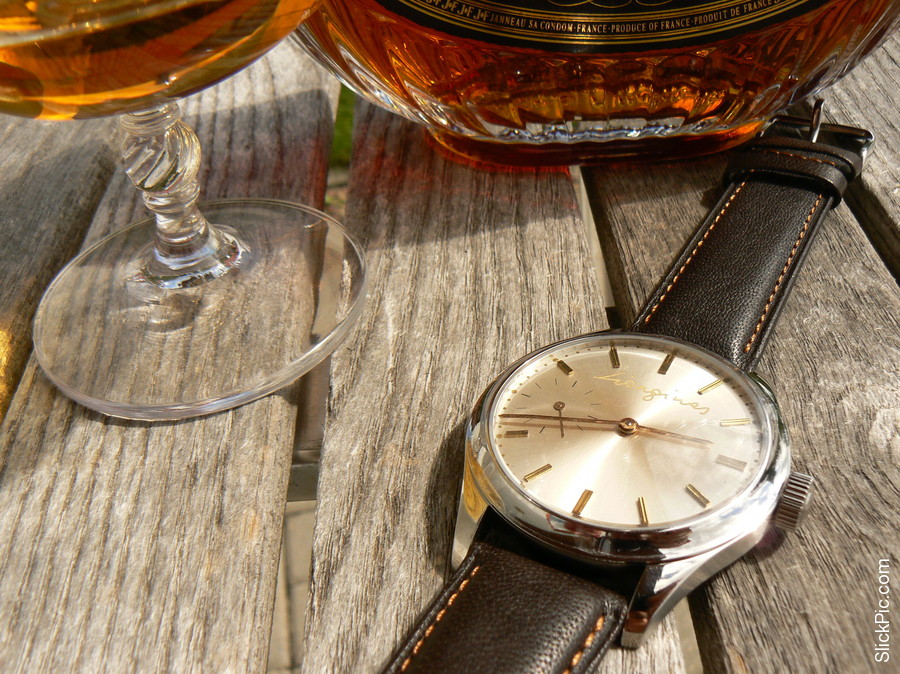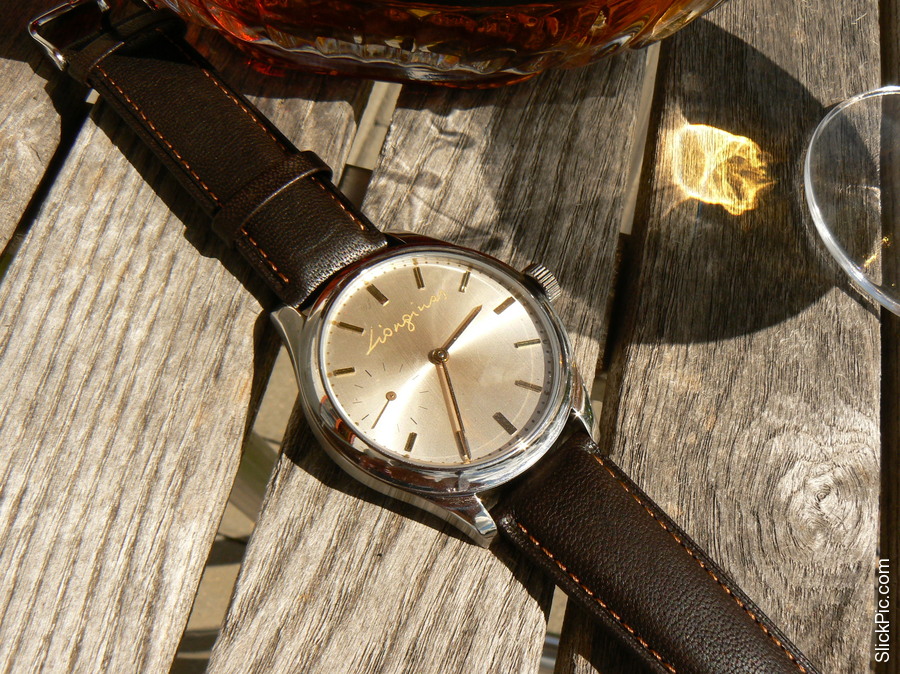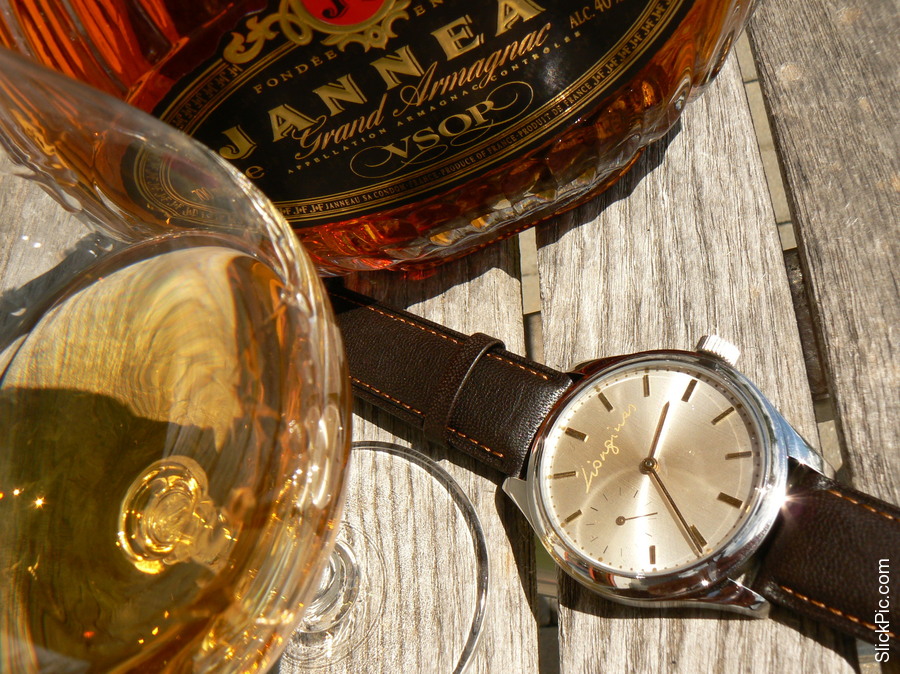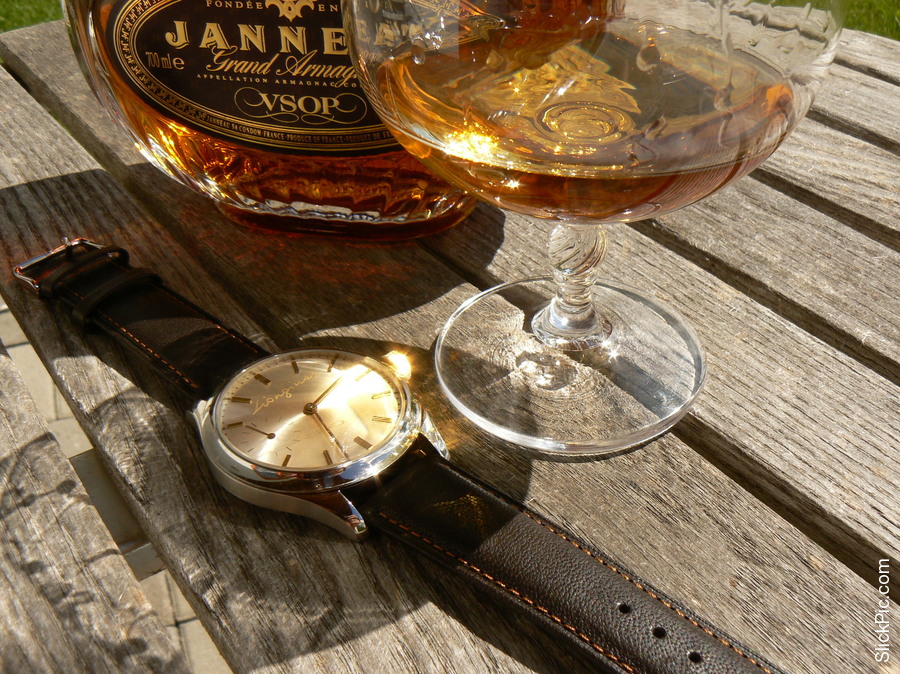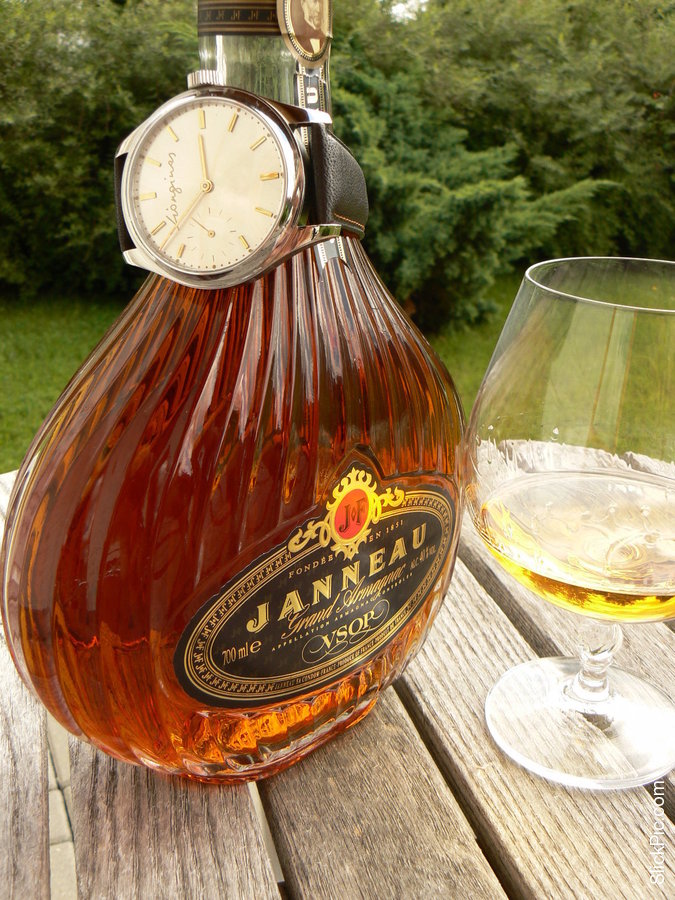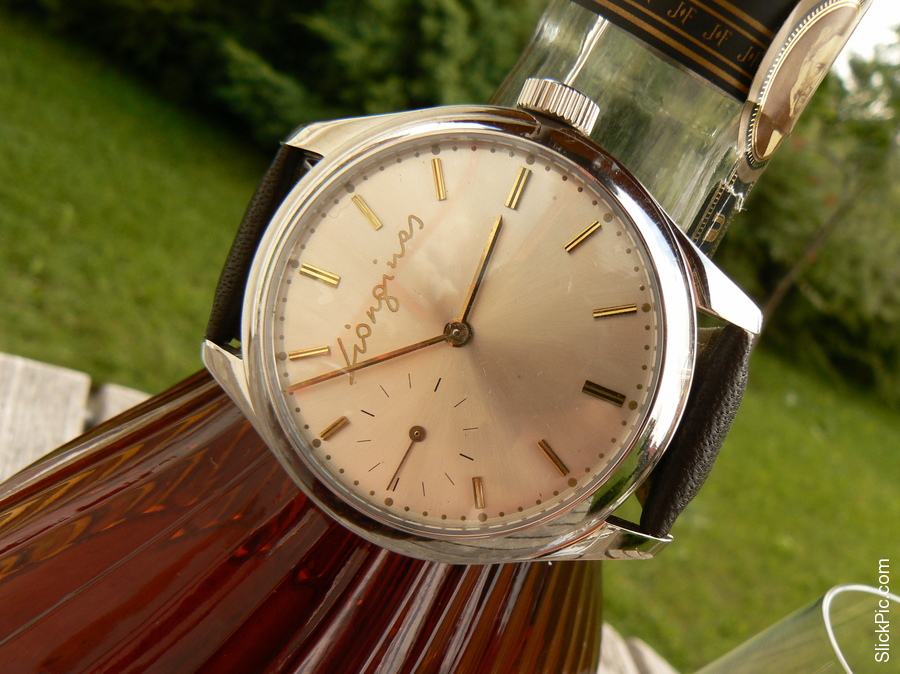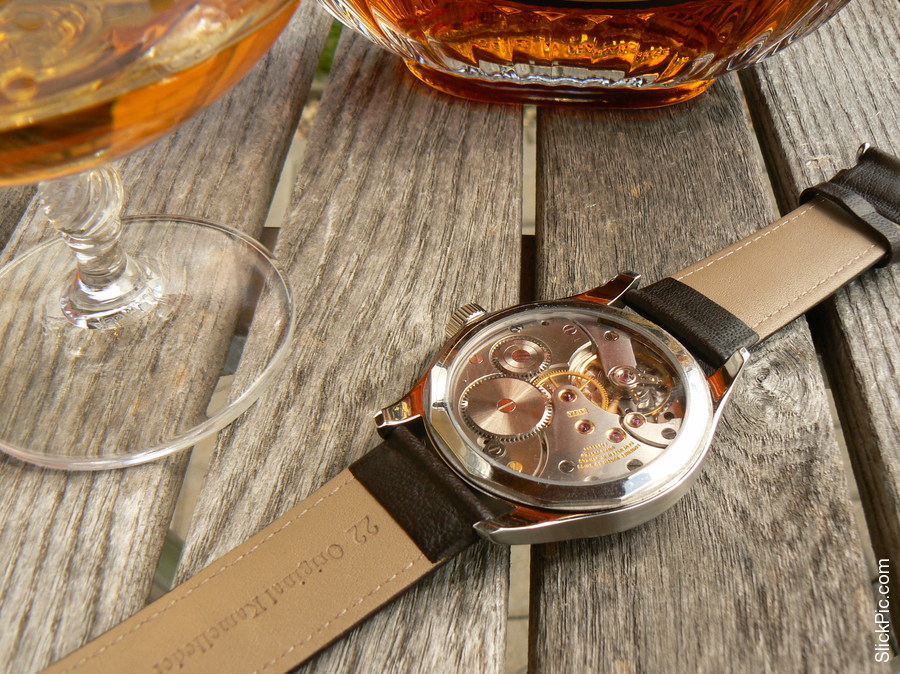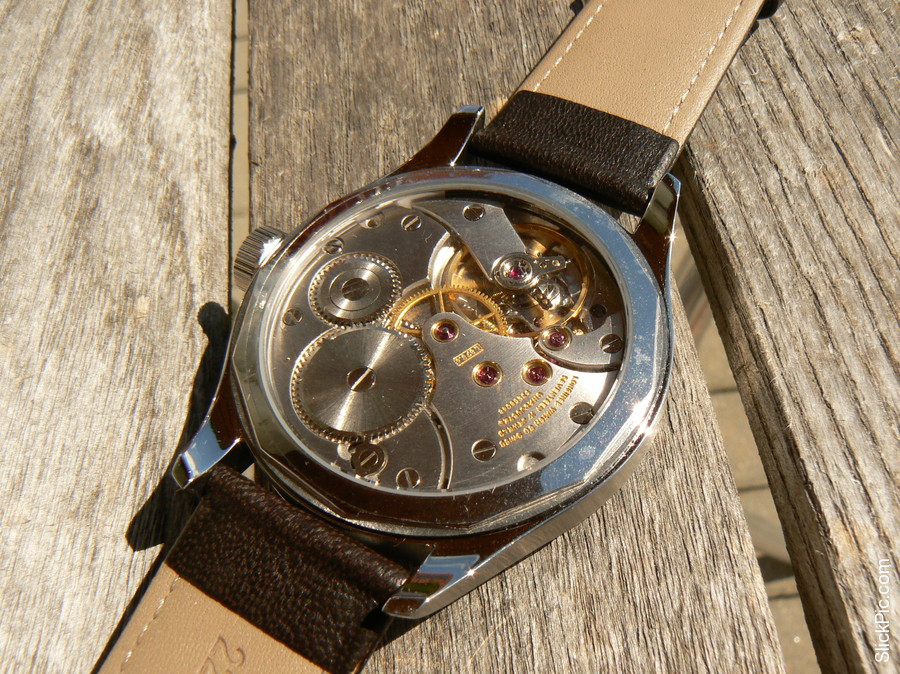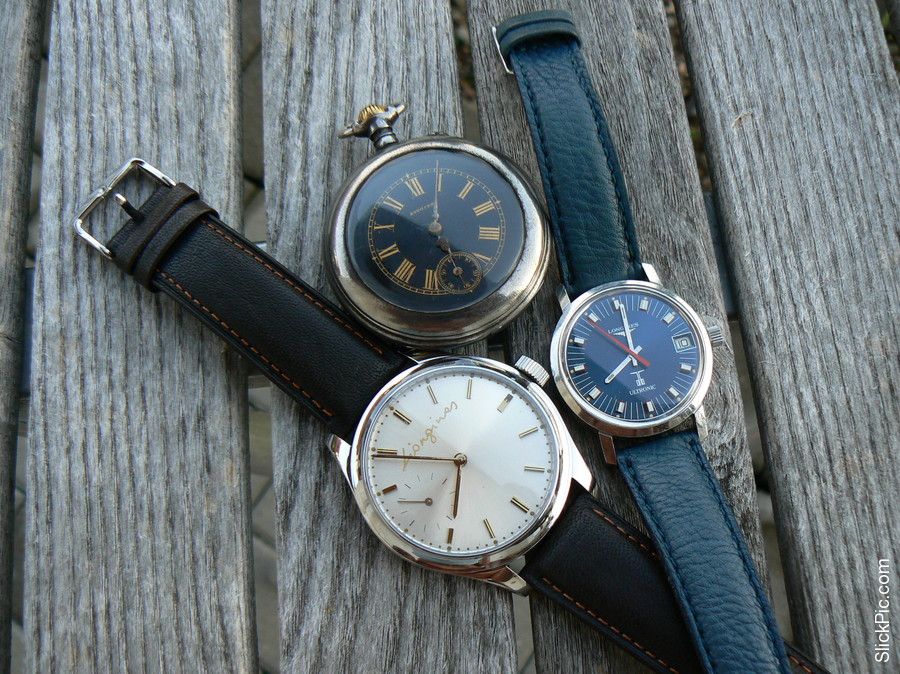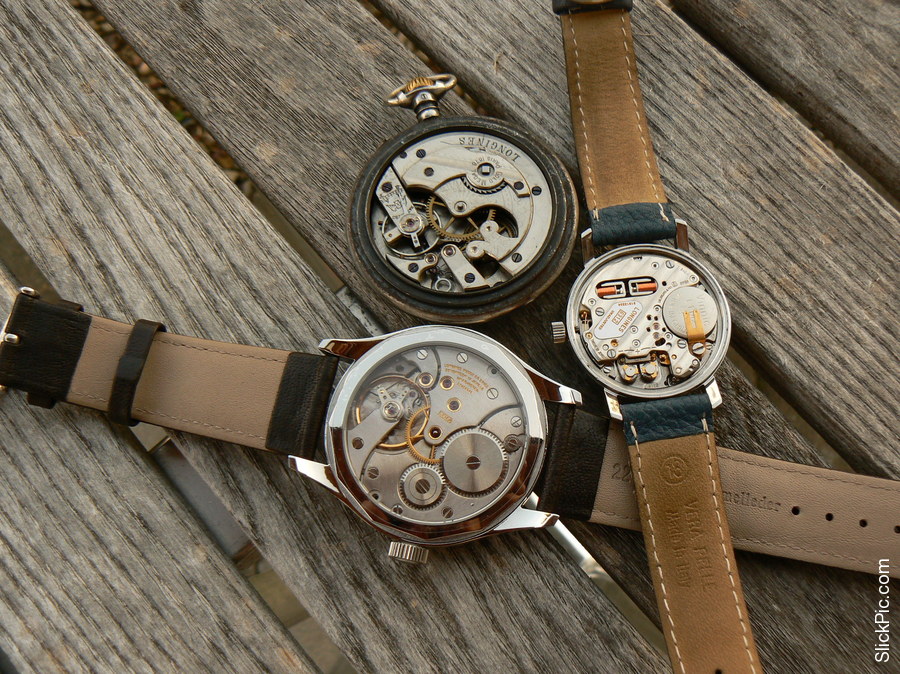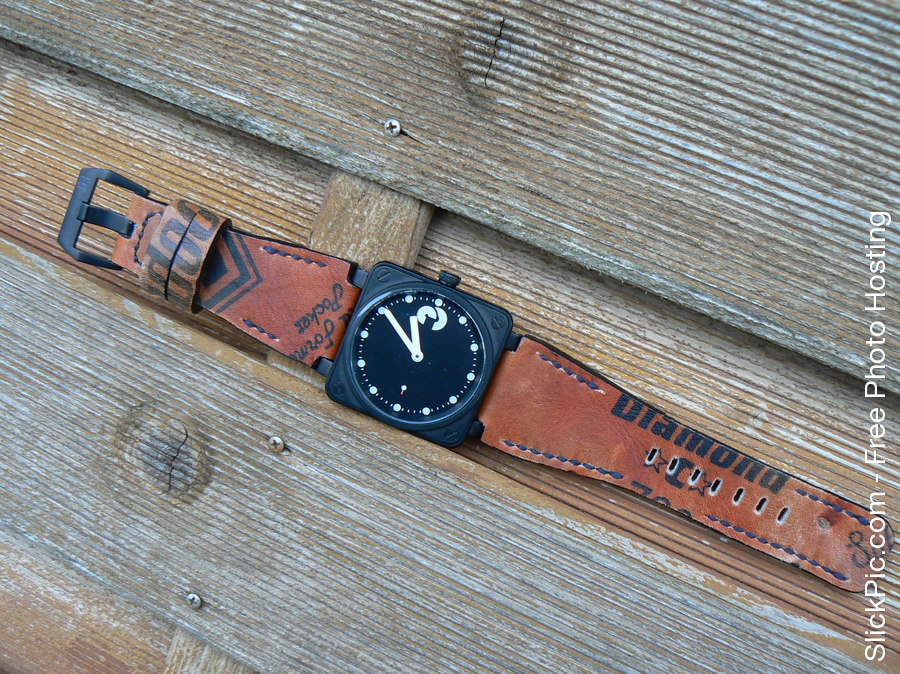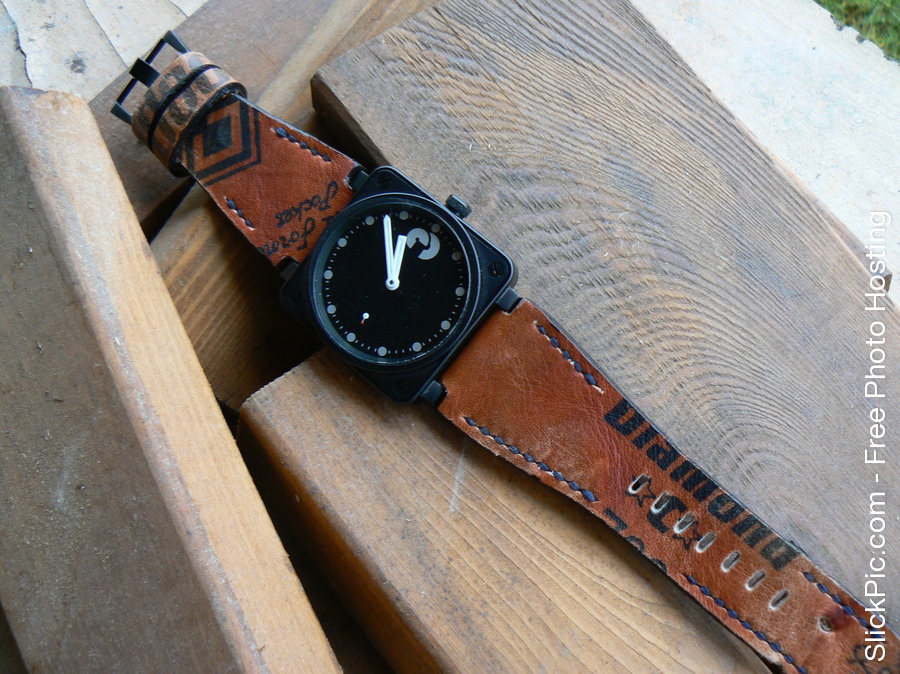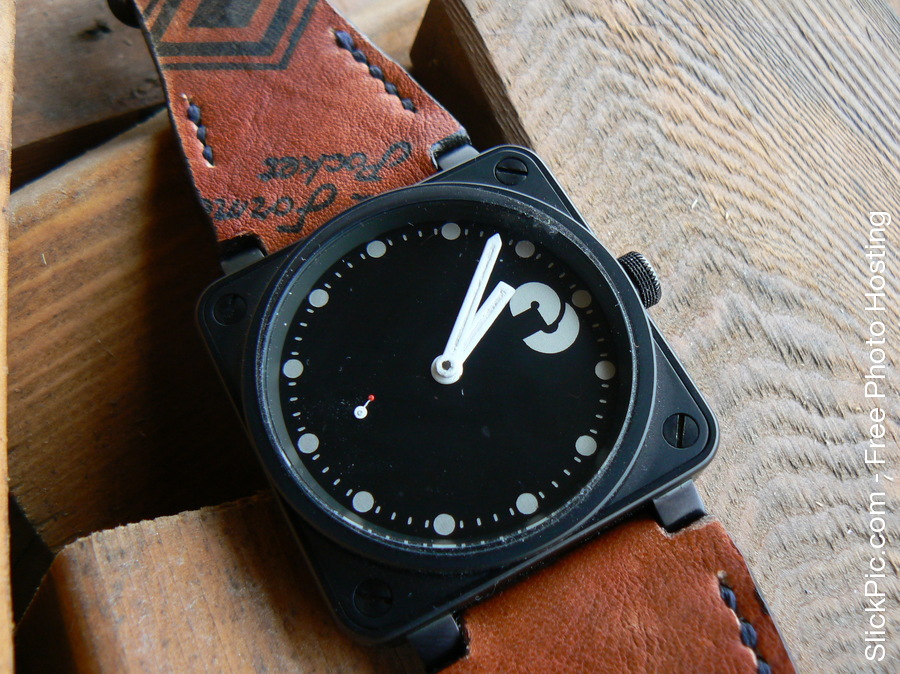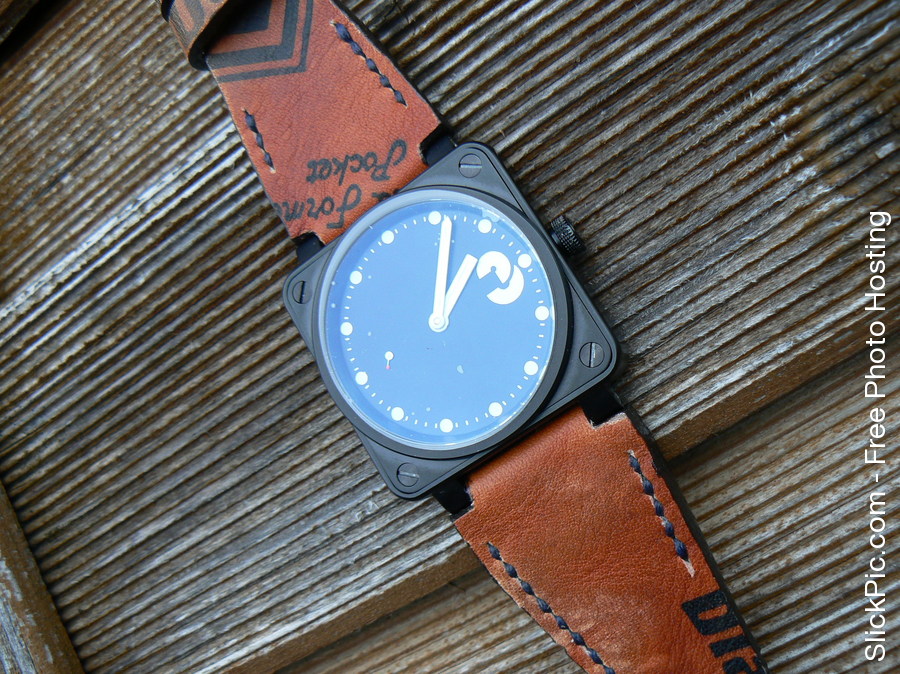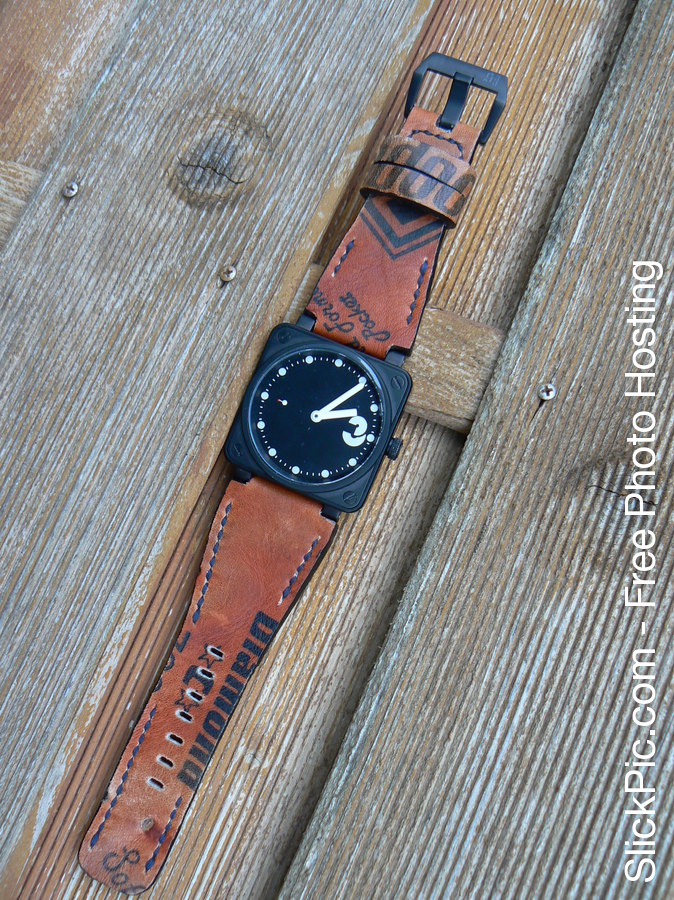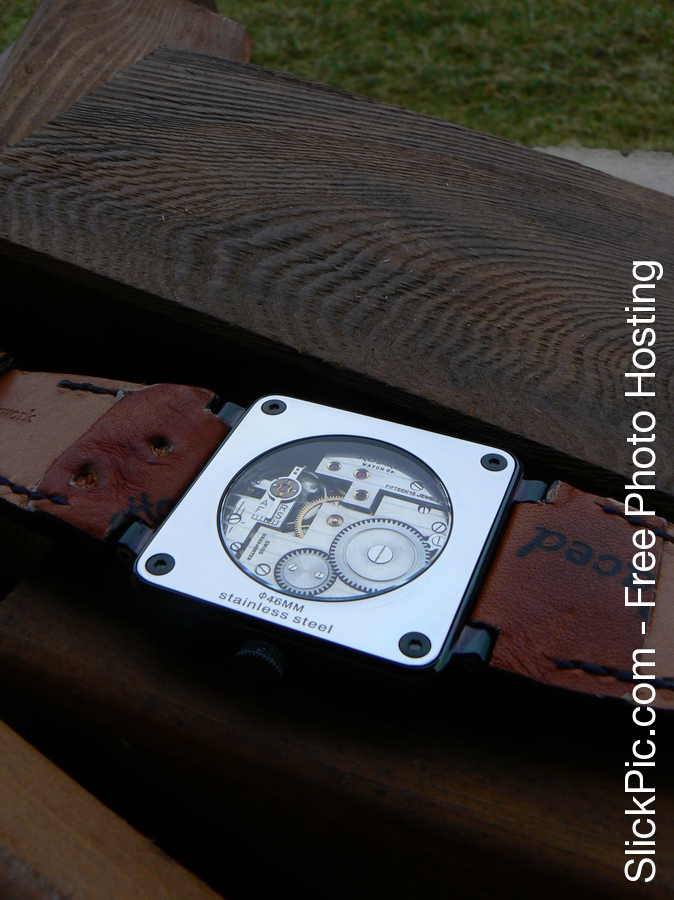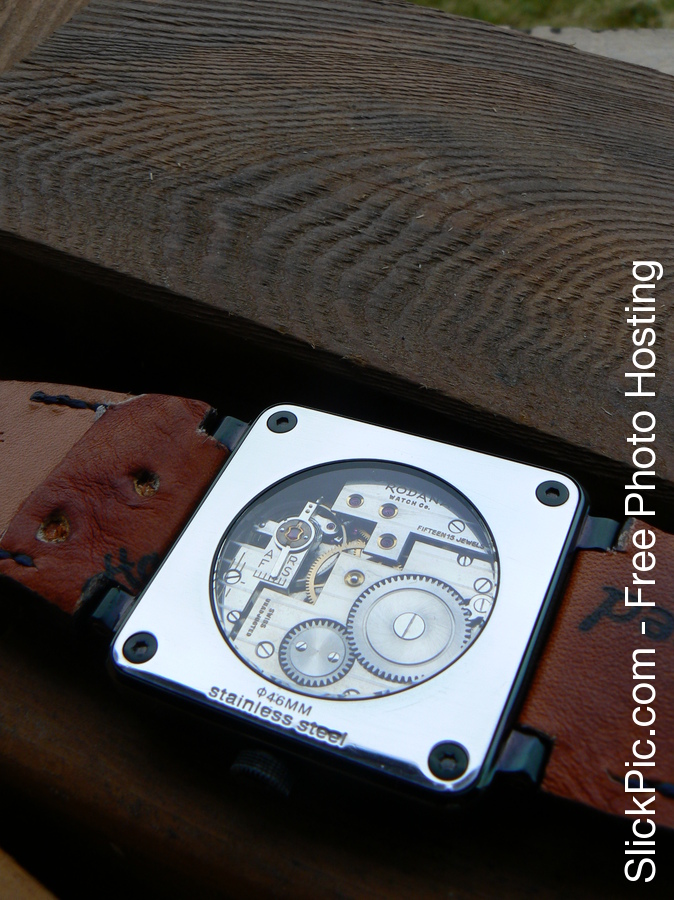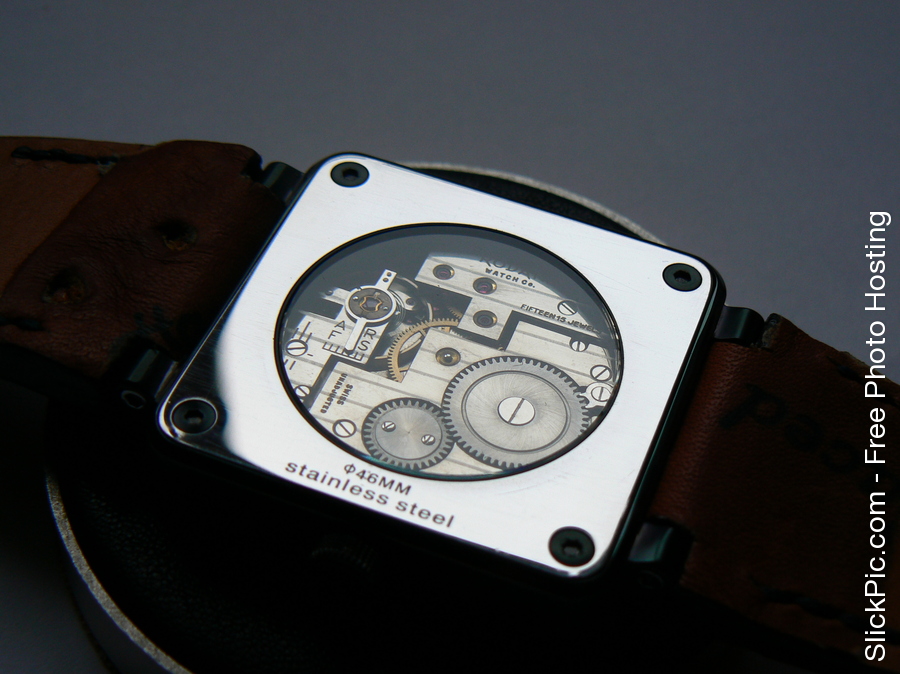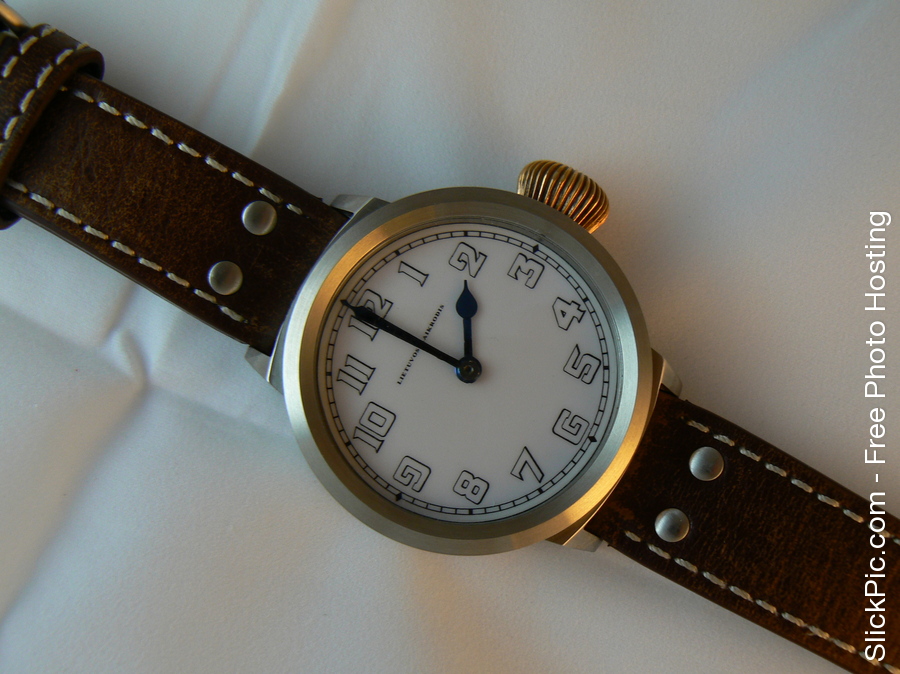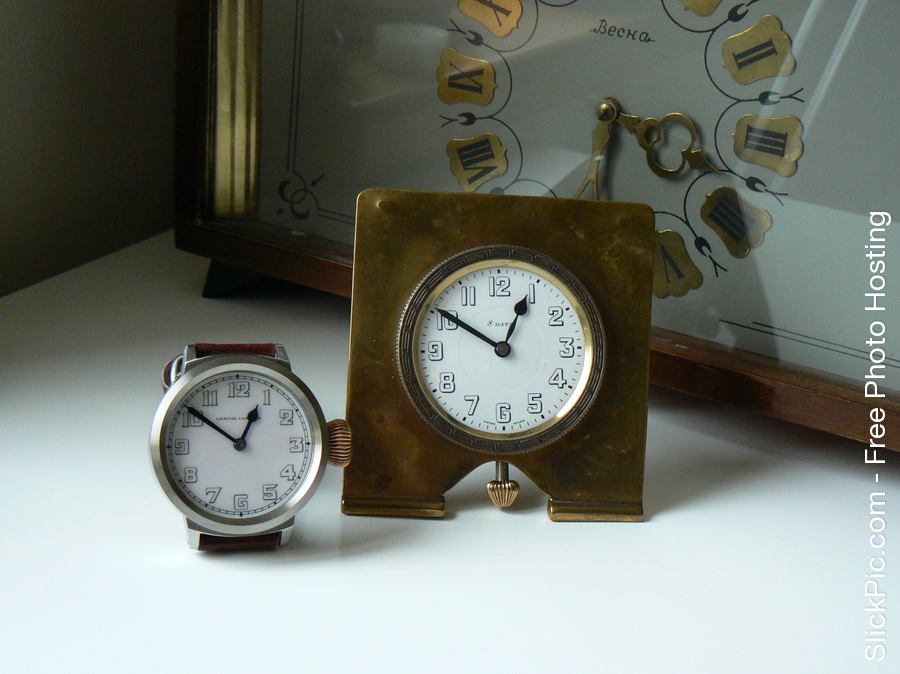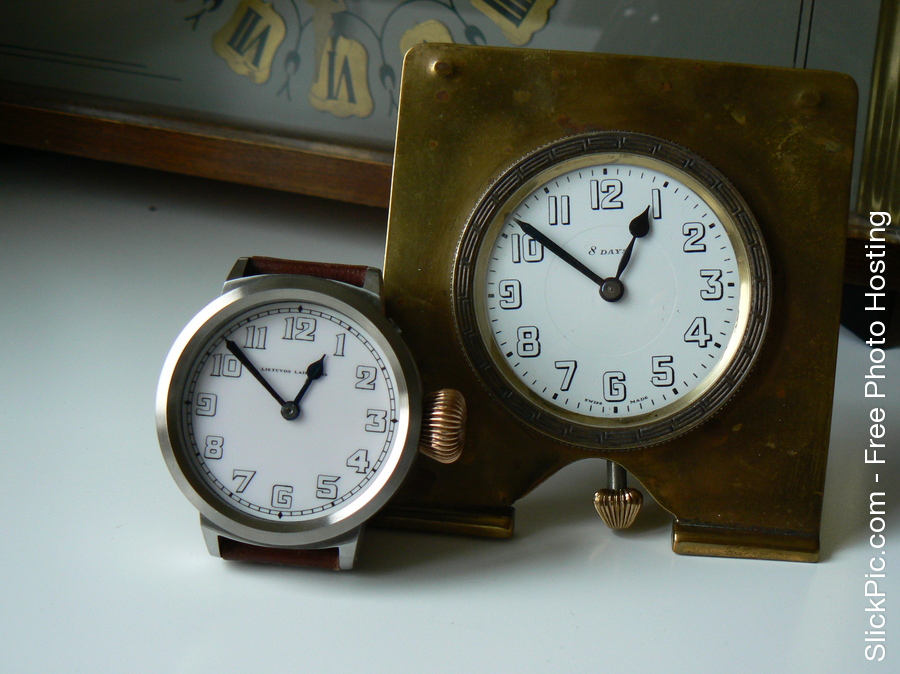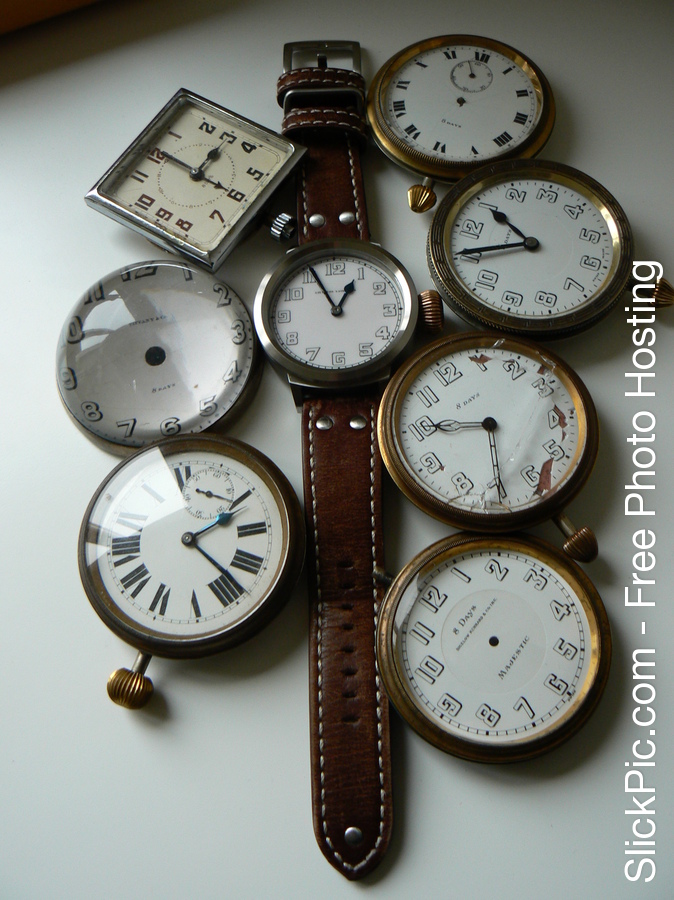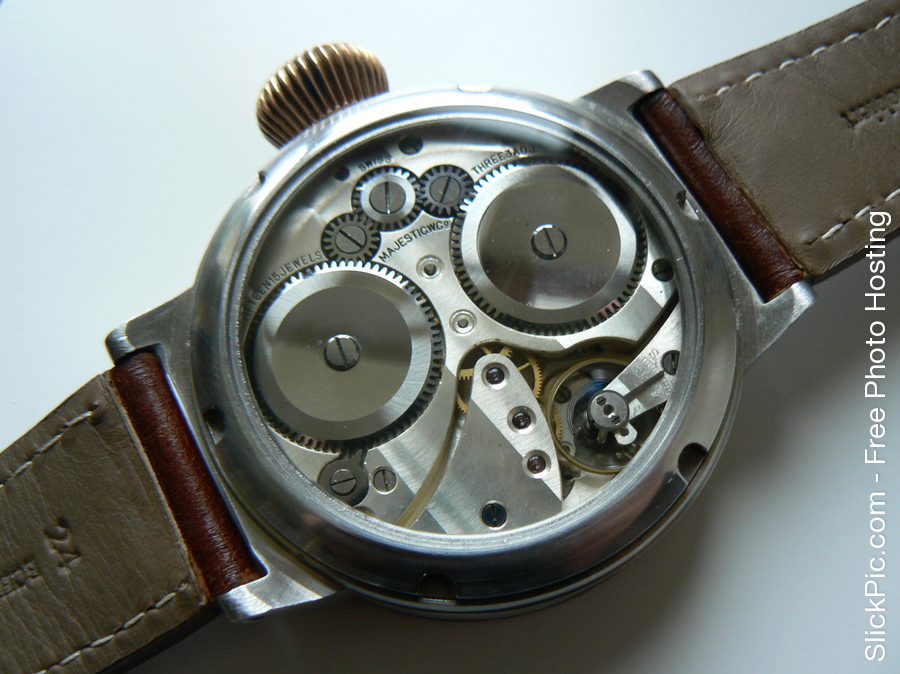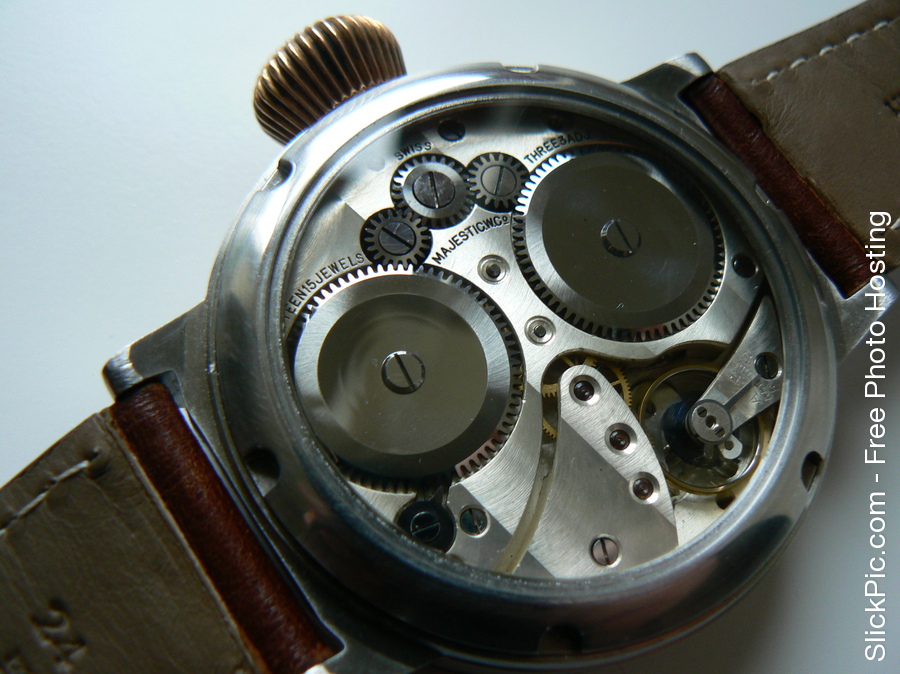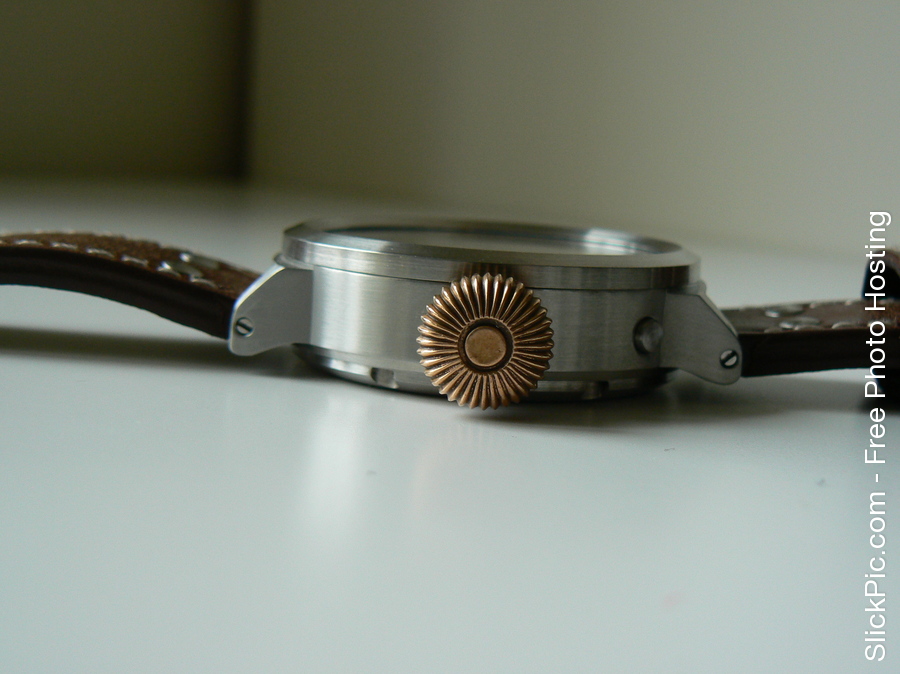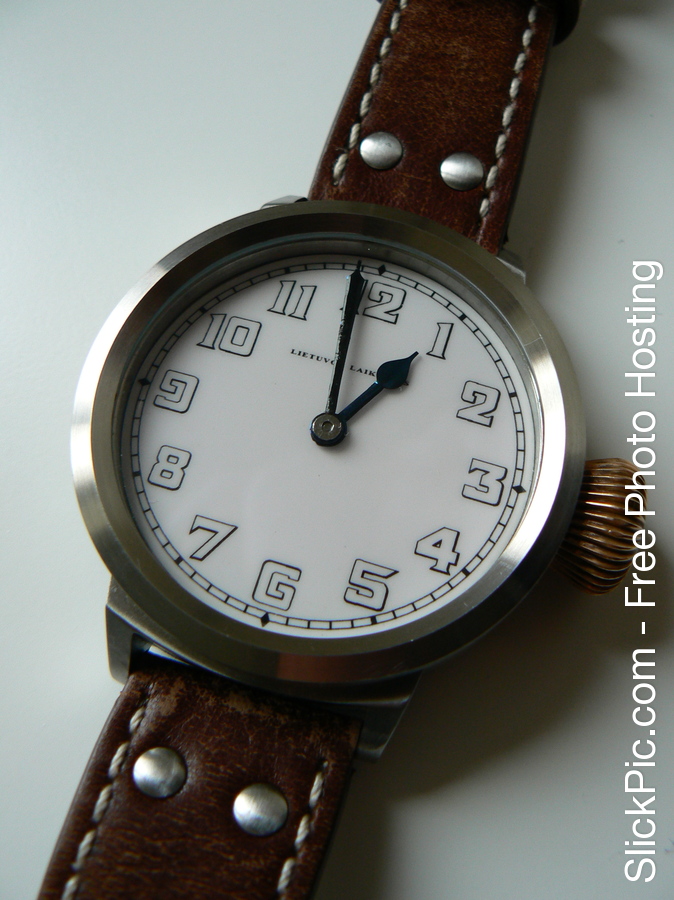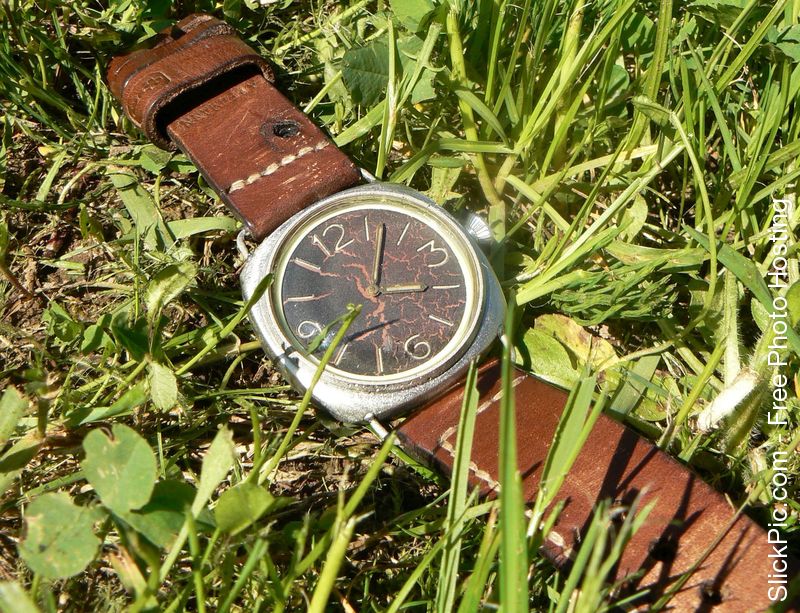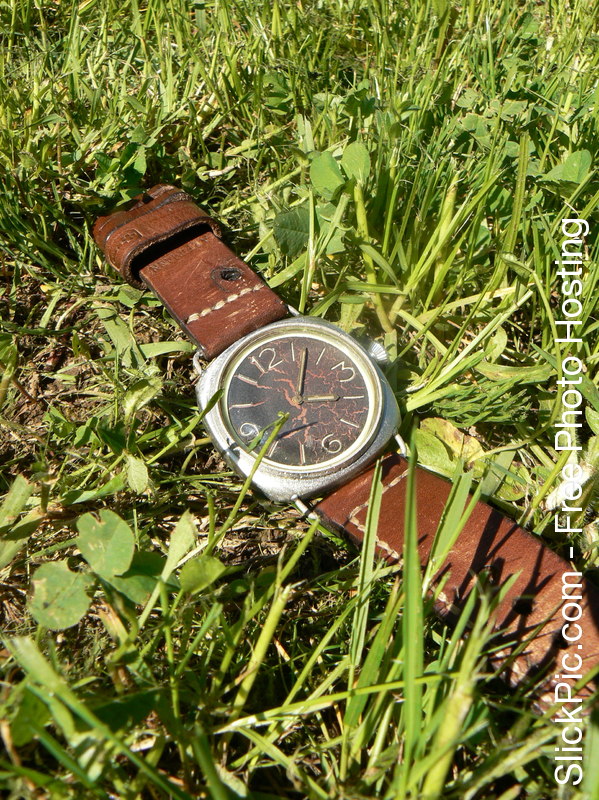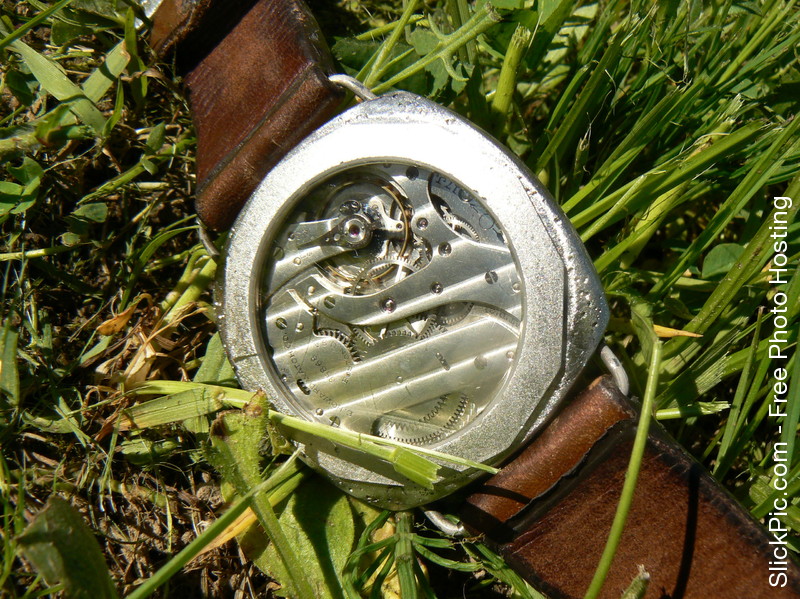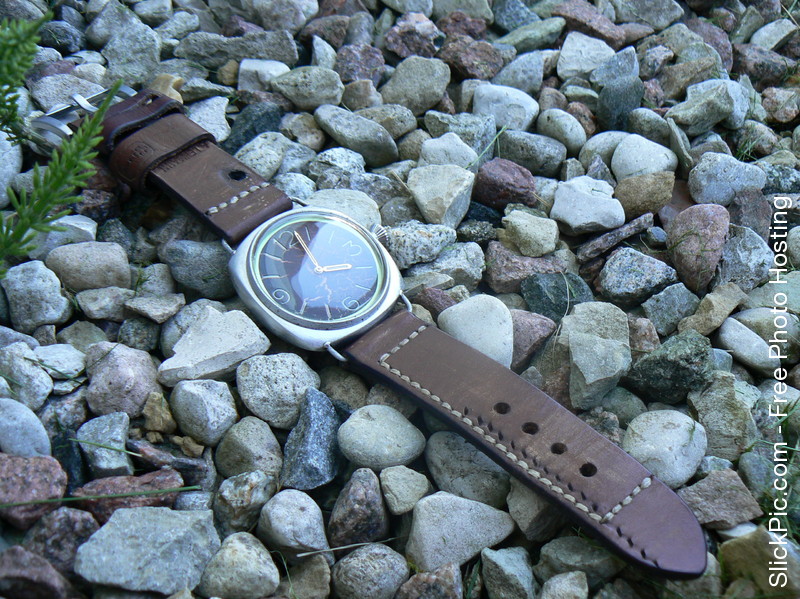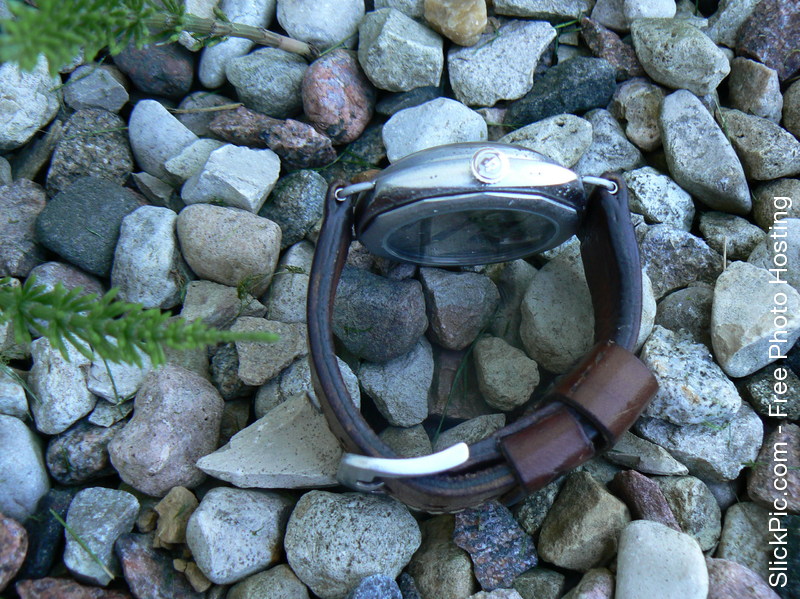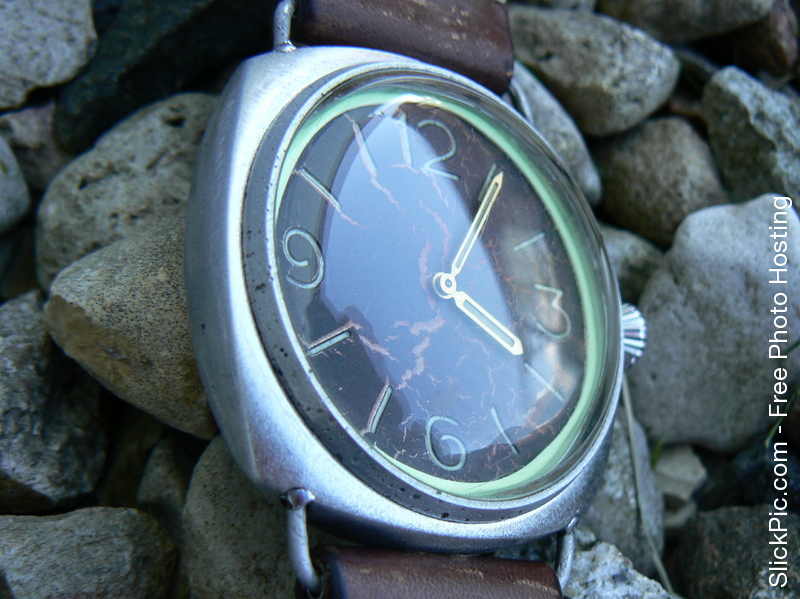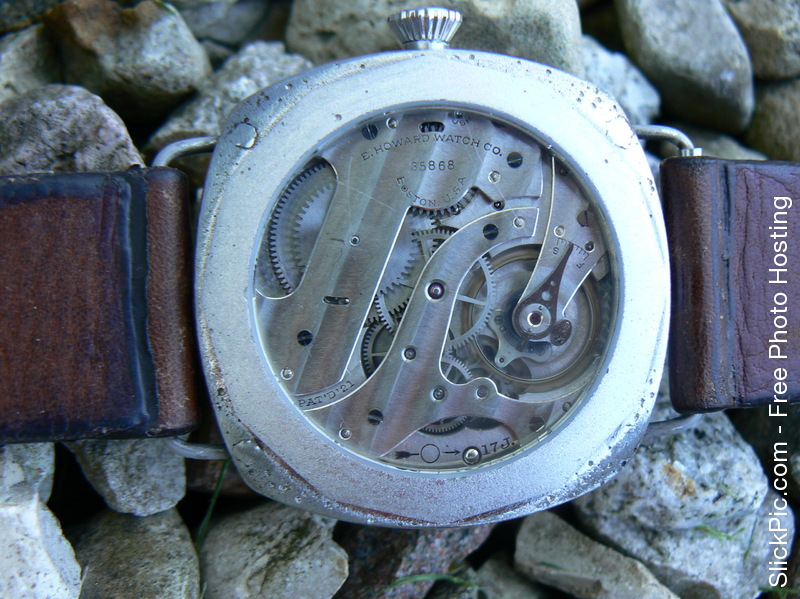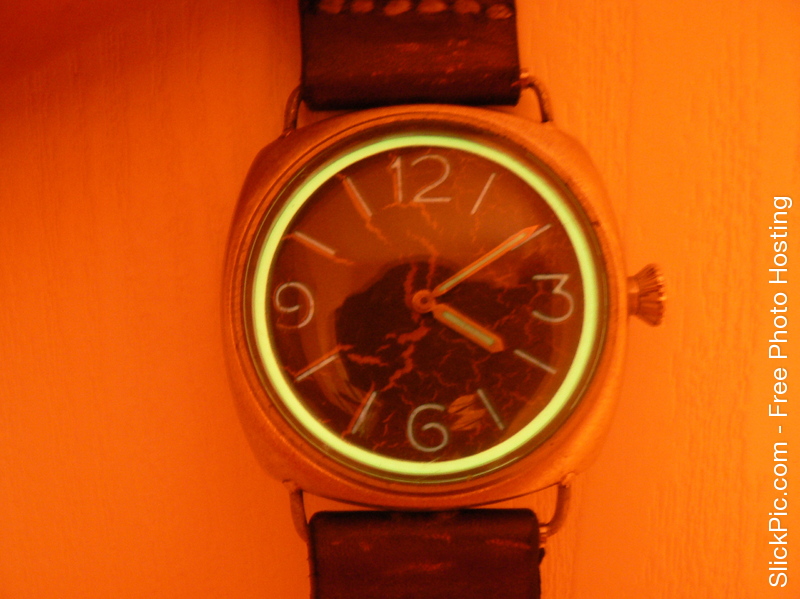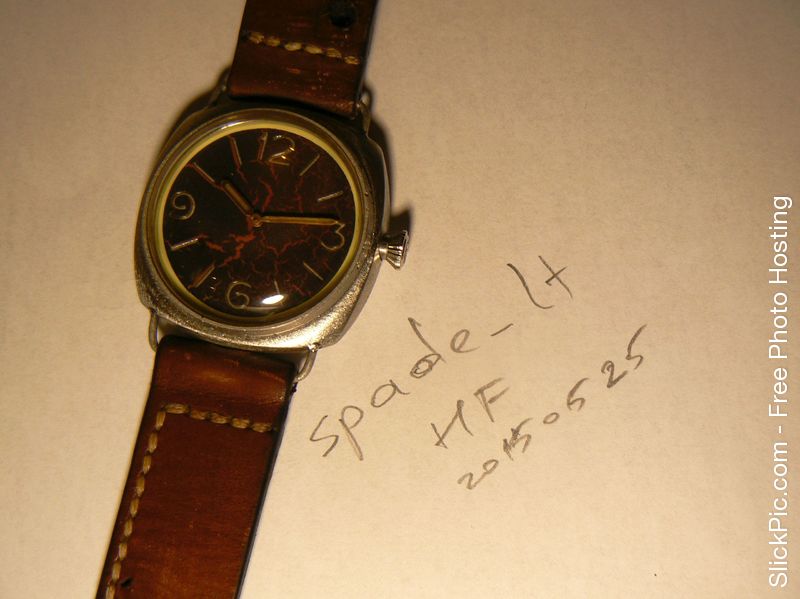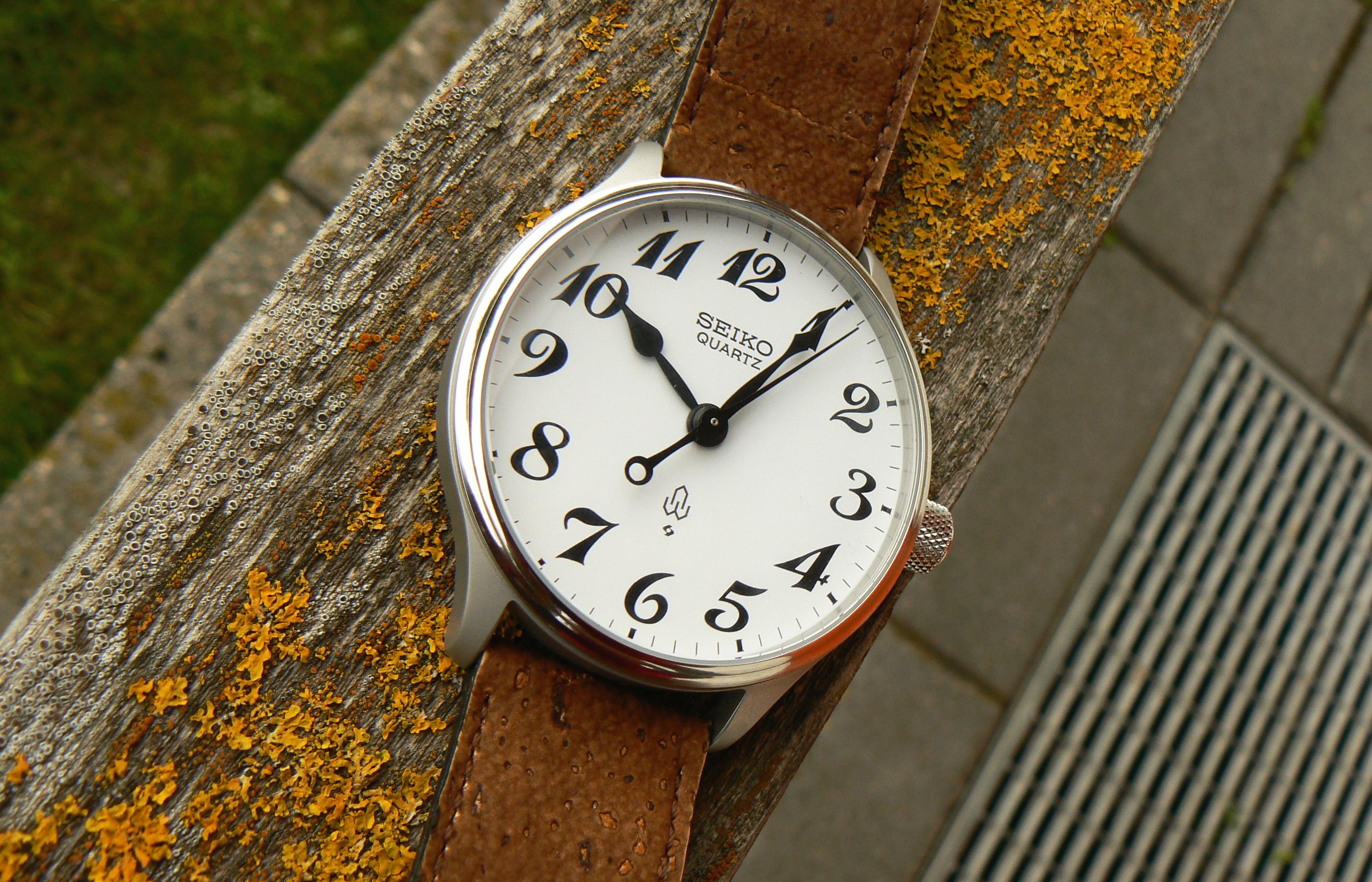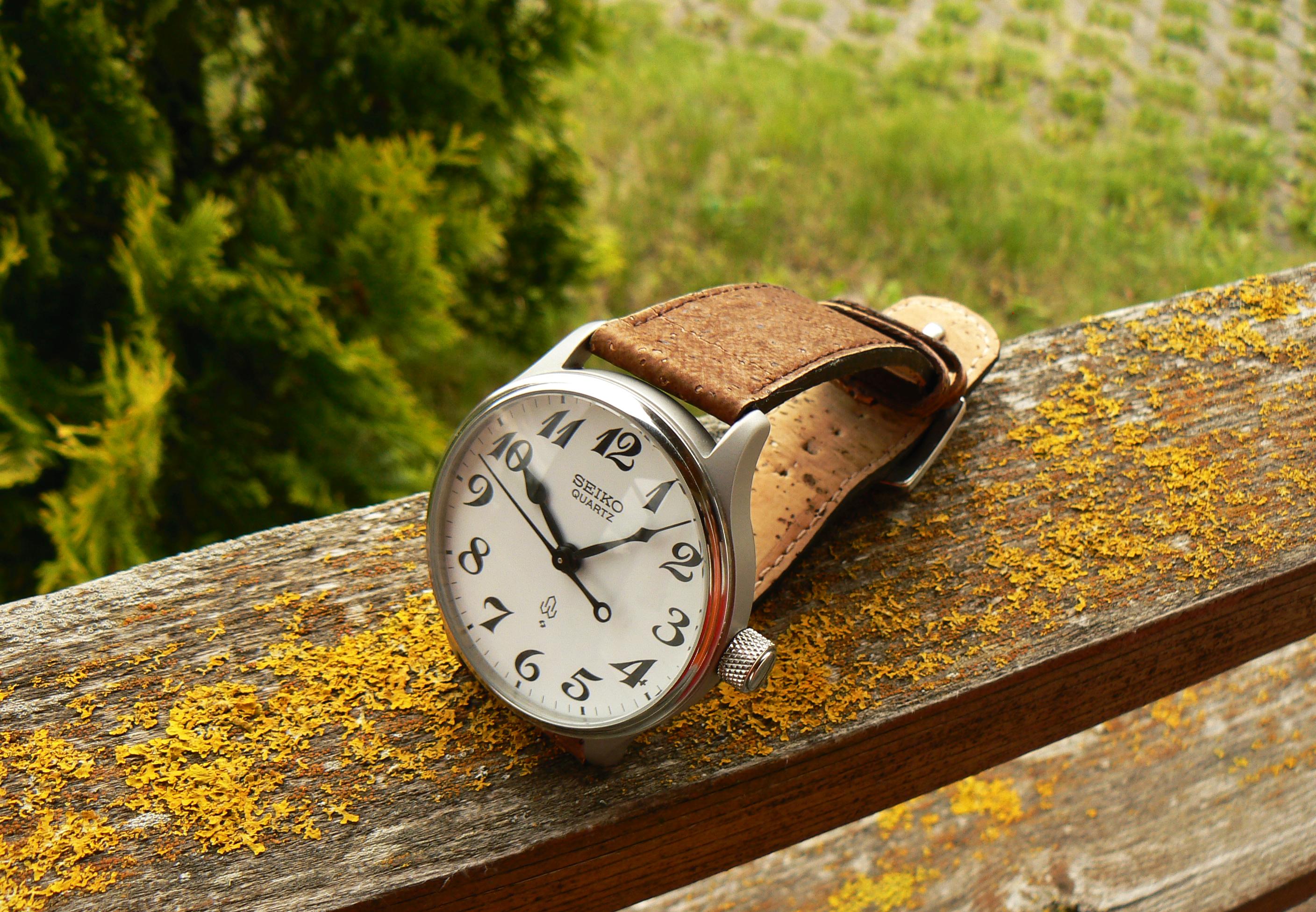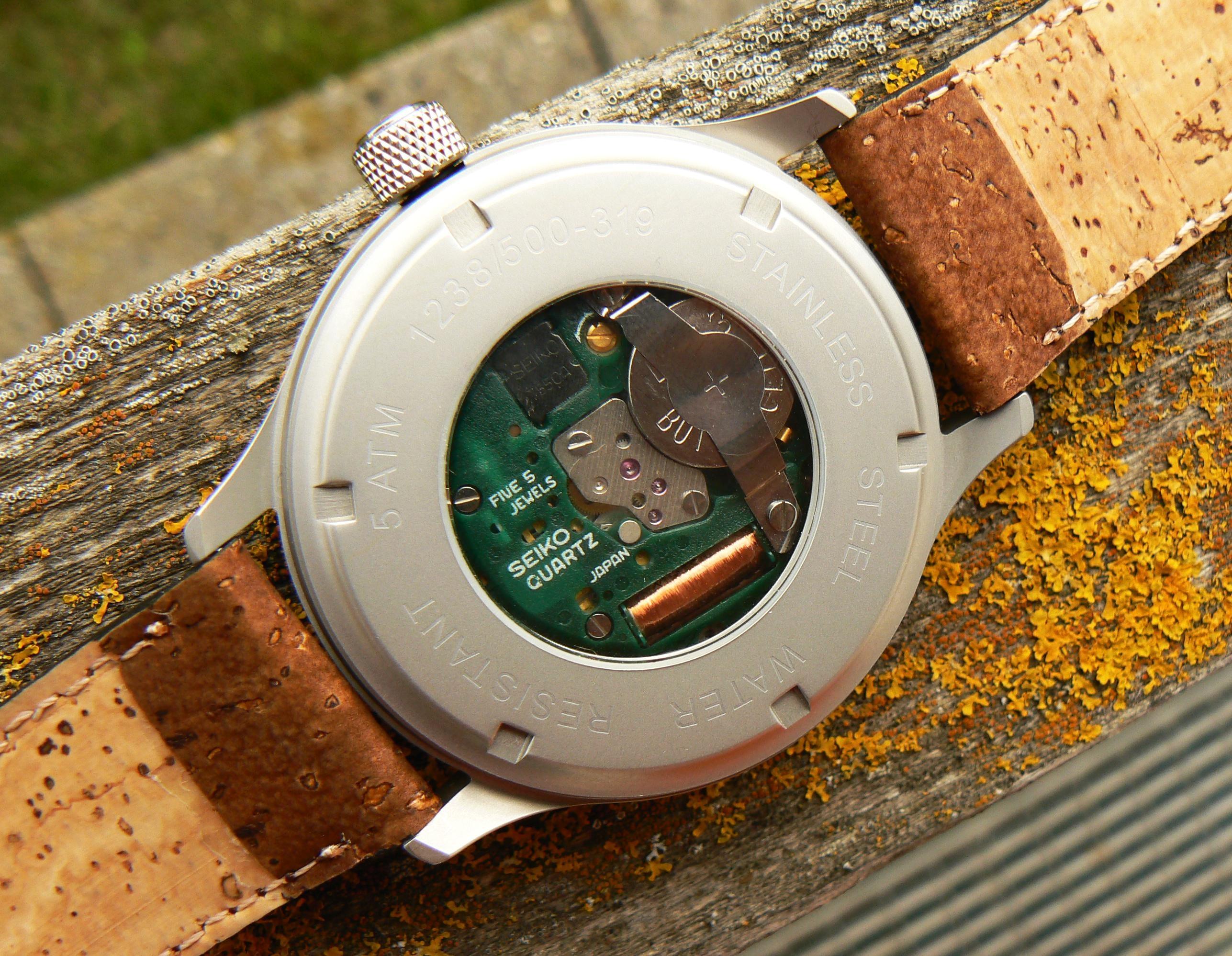Big Pilot 'Elapsed Time' originally uploaded Fri Aug 30, 2013 2:55 pm
-----------------------------------------------------------------------------------------
This is my most ambitious / complicated (finished) project up to date.
When I look at it now, it seems exceedingly simple (as it always does when you look at the finished project) when in fact there was a lot of work. In the process I installed and removed the movement from the case something like 40 times... if not more.
Behold!!! 
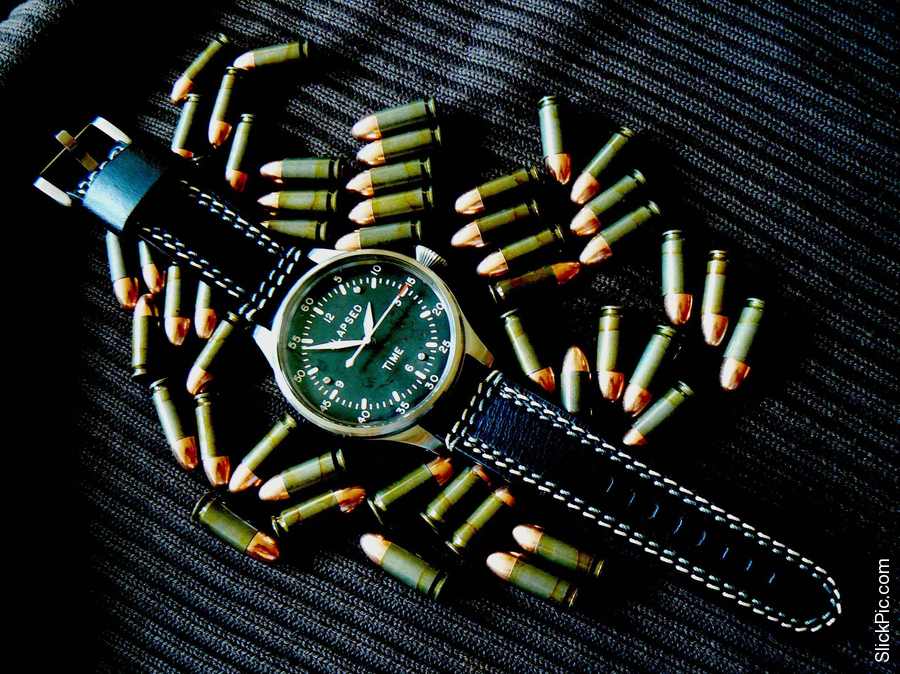
Tried to do an artsy photo
 but it became clear that for me (with my skills and equipment) it's not possible, because the plexi throws reflections like crazy (even when using polarised filter) - other photos are way simpler.
but it became clear that for me (with my skills and equipment) it's not possible, because the plexi throws reflections like crazy (even when using polarised filter) - other photos are way simpler.
From the begining (of my interest in watchmaking) I knew that I wanted to make a real big pilot, of the real B-uhr size - 55mm. So I bought the case set (actually the whole (automatic) watch) from Jackson and started thinking about how to proceed. Some of You might remember the
thread I started some time ago about the movements with central seconds. As we all know there aren't to many (not to say 'any') pocket watch size movements with central seconds (at reasonable prices, I might add).
Most popular (for a good reason) is 3608, but it's only 36mm in diameter. I wanted something bigger.
Why? Well, because... originale Beobachtungsuhren were big watches for a reason - they used big movements with indirect central seconds:
Lange used Cal. 48/1, which is 48mm, that's 21+ lignes (Lange prototypes used in development of B-uhr used Cal. 45 which is 20 lignes);
IWC used Cal. 52T SC, which was 19 lignes;
Laco used Durowe Cal. D5 which was 22 lignes;
Stowa used Unitas (Tramelan) Cal. 2812 which was 18 lignes;
Wempe used Thommen Cal. 31 which was almost 19 lignes.
You can notice that the smallest movement was 18 lignes... compared to that 3608 is only 16 lignes

I could say I was lucky because at that time Blackmonkey was selling a clock from the Mig photo cannon (a cannon used in training instead of the actual (real) guns). It's either from Mig-15 or Mig-17.
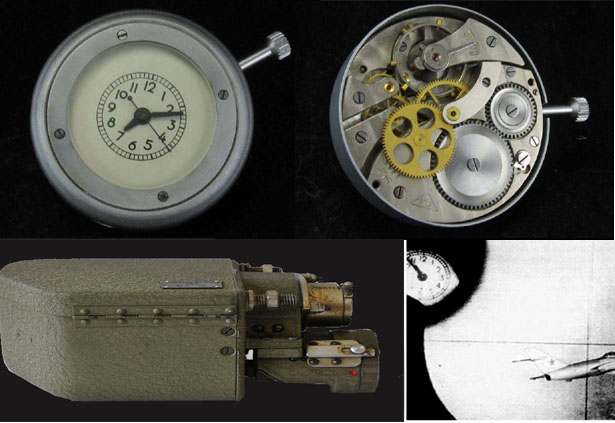 (photo by http://hampdenwatches.blogspot.com/)
(photo by http://hampdenwatches.blogspot.com/)
Sorry, I didn't take any photos of the watch I bought, but it looked exactly like
this (only markings on the movement are different). And
this is how the whole camera looks like...
This movement is a modified Soviet Type-1. Type-1 was the first movement made in the Soviet Russia (at least in big quantities). Production started in 1930. On the base of that movement there were made central seconds and even chronograph variations.
The story of this movement is pretty interesting (and if You are interested I recommend You reading abovementioned page
http://hampdenwatches.blogspot.com/).
In a few words: after the october revolution there was no watch production in USSR and soviets were on the lookout for the possible solution to this problem. At the time american company Hampden-Dueber became bankrupt. Soviets used the moment to purchase all the production facilities. So soviet Type-1 is basically a Hampden-Dueber model 5, but with utilitarian finish and not made to a high standard.
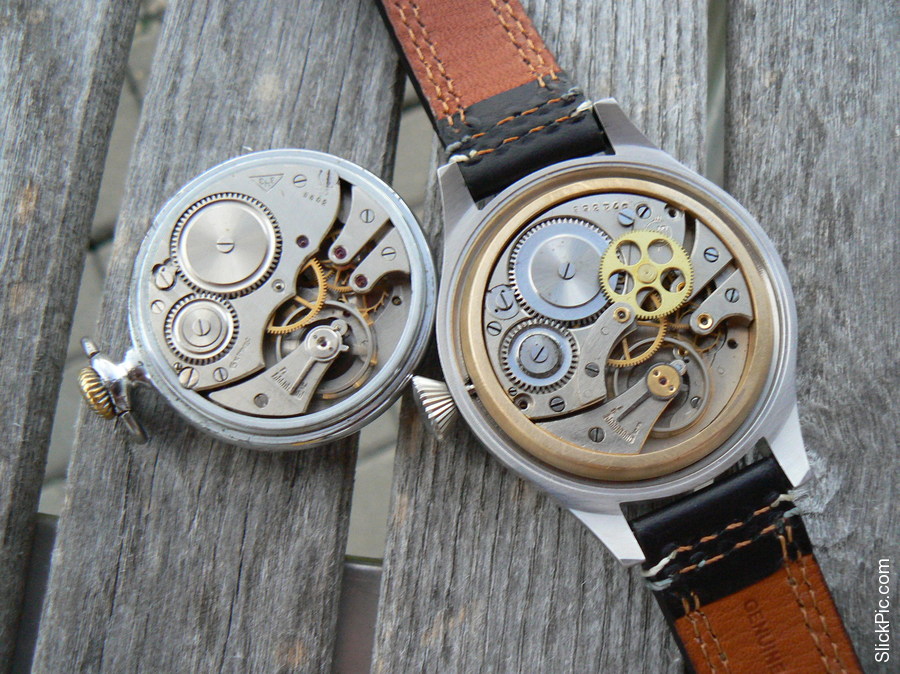
'Normal' Type-1 movement compared to central second modification.
CS movement has 16 jewels set in chatons (later Type-1 movements dispense with them, as You can see in the photo). Production date on the case is 4-58, but considering that central second conversions are post-production, the base movement was probably made earlier (there is no production date on the movement). Another notable thing about this movement is that it is made in the Chistopol factory - all other central second Type-1 I have seen were from Zlatoust (basic Type-1's were made by 4 factories: Moscow 1st and 2nd, Zlatoust and Chistopol).
The movement is american size 16 which translates to 19 and 1/4 lignes - pretty good size for a B-uhr movement, I think

. Here it is compared to the 3608:
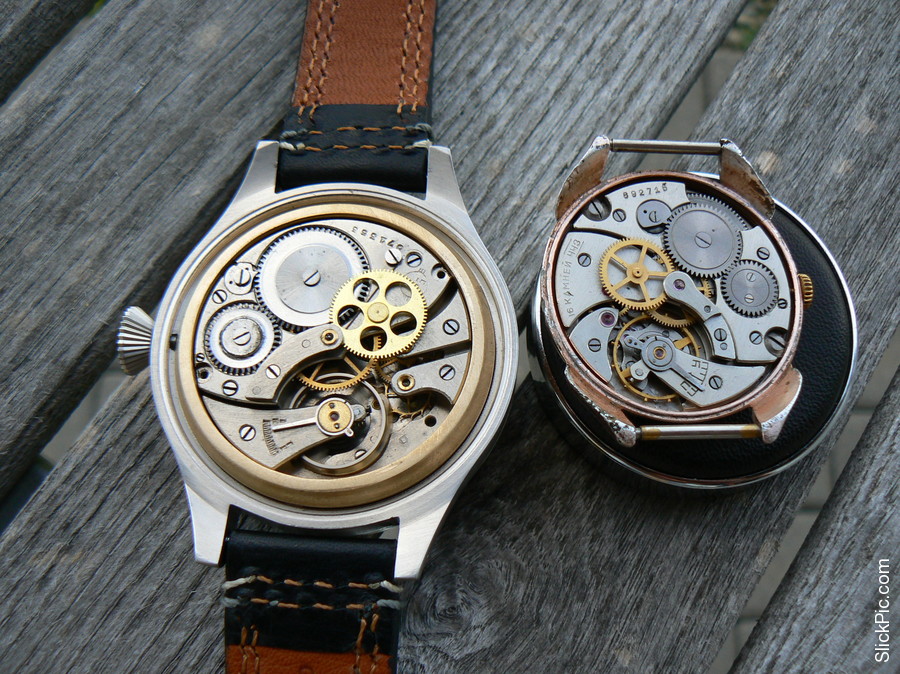
Slightly bigger?

But that's exactly the problem with this movement - it's BIG. Not only diameter is big (which is not a problem in this case) but the thickness of the movement including the dial are full 10 milimeters. And the internal height of the case is only ~7.8mm

. Additionally, the stem height of the movement is ~0.75mm to high for the case...
So, I started thinking and measuring.
Turning the dial surface on the lathe (i.e. recessing the dial mounting surface) so that stem height is right would give me 7.8mm + 0.8mm = 8.6mm internal height
Caseback was 1.4mm thick. Converting it to see throught would add at least half of the thickness: 8.6mm + 0.7mm = 9.3mm
But that means that I still lack 0.7mm. To get these last tenths it was necessary to use a domed rear glass.
So the case was modified accordingly.
Recessing the dial surface by 0.8mm created the problem that the rehaut on which the plexi and the bezel are mounted was left hanging on the hair so to say - on the thinnest (probably less than 0.1mm) strip of metal... The plexi and the bezel had to be epoxied onto the case for safety / strenght.
Caseback was modified to a see through. Glass size is 43mm domed superthin mineral. It nicely follows the curve of the caseback (sorry, forgot to take a photo from the side).
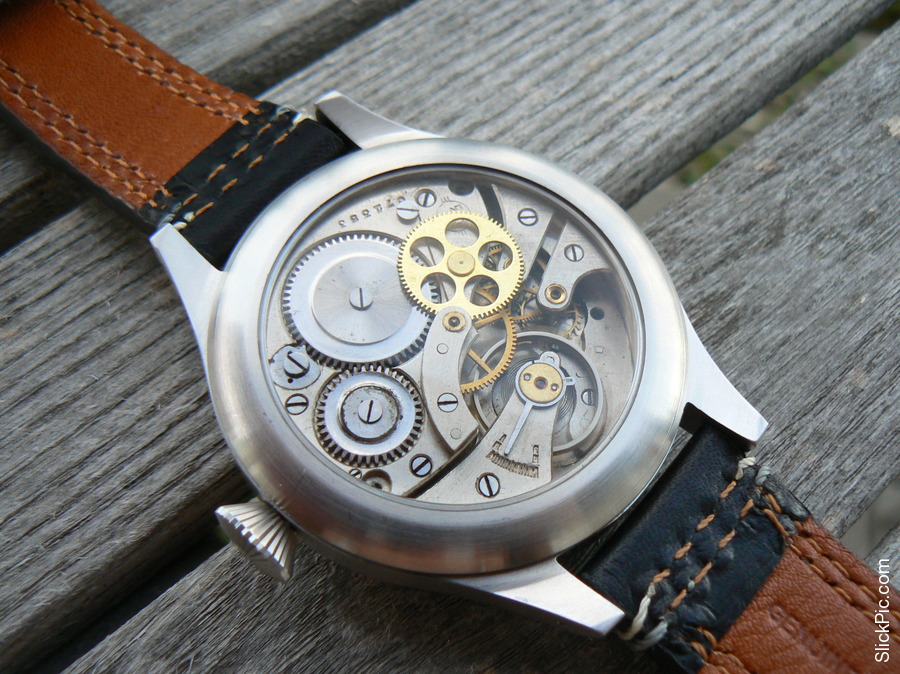
Custom brass movement ring was made for the movement. It was made to high with the idea that it could be filed to fit perfectly - now the movement ring holds the movement in place and is itself held in place by the caseback.
Case wasn't reshaped although I'm still thinking about maybe slightly reshaping (rounding) the lugs...
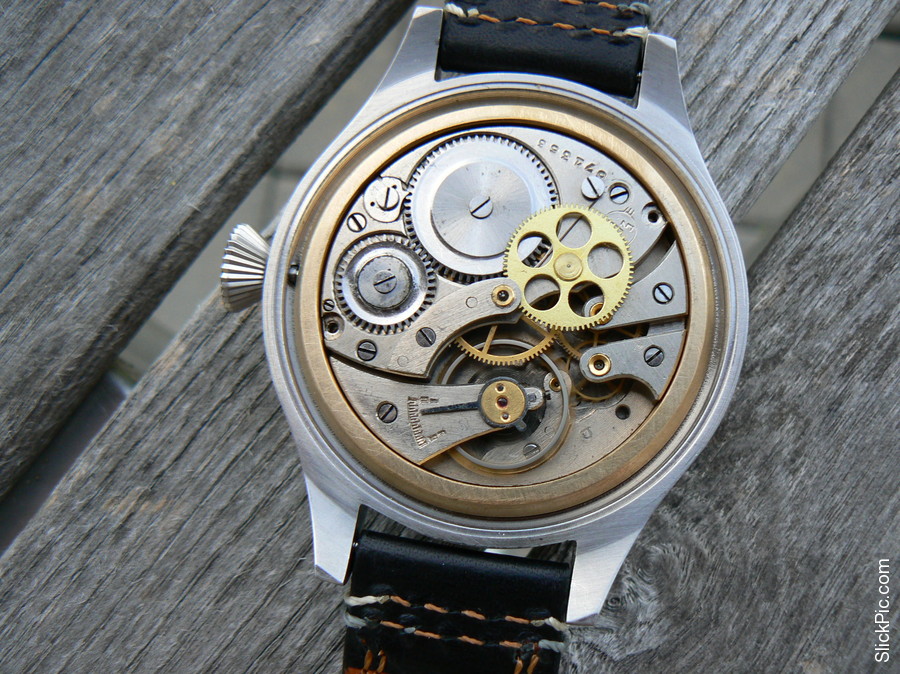
While these modifications were made there was a question of the dial. I thought about making a custom dial... or maybe just using a stock dial which came with the case. But then I noticed a Waltham Elapsed Time (to be exact Waltham Type W12 Model 22222-S-ET-12 8 Day

) dial on the ebay. It's from the clock which measures elapsed flight time (at least as much as I understand). The clock
was used in Grumman F9F Panther.
I really liked the idea. On the one hand 'Elapsed Time' on the dial of the watch reminds of the 'memento mori'. On the other hand, there is something ironic and cool about the watch in which the movement was intended for the soviet fighter and the dial was intended for american counterpart

I glued 3 tiny screws onto the dial so that it looks as if it is screwed onto the movement (as it is in the aircraft clock)

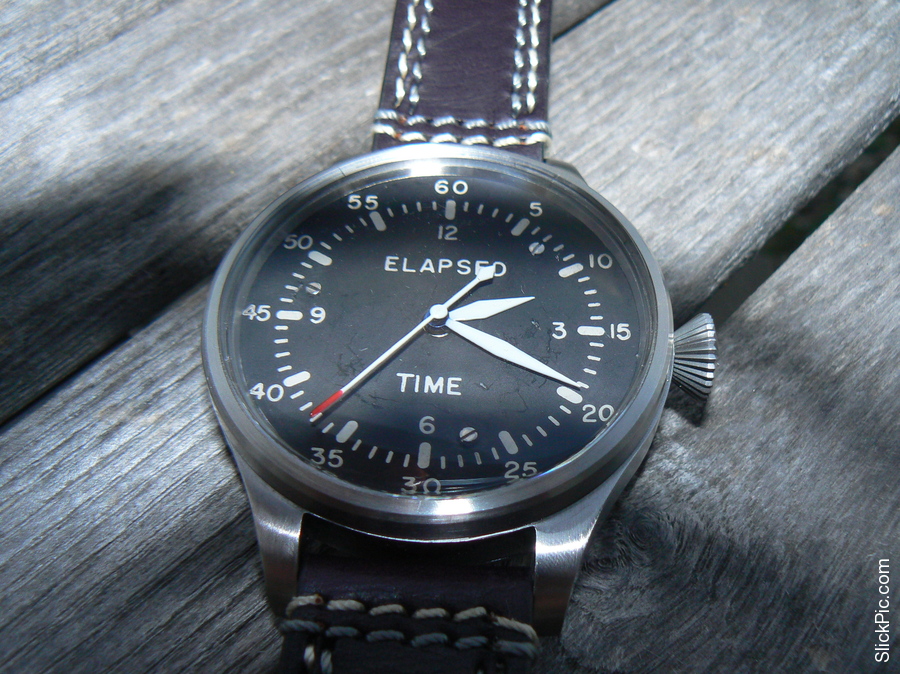
Ok, what else?
Some details.
Crown. I tried to source another crown, but in the end used the one which came with the case - epoxied a stem extention into the crown which in turn was screwed onto the stem. Although drawing which is available on the internet shows the crown size of 10mm, in fact all the (photos of the) B-uhrs I have measured had the crowns of ~12mm size and I was not able to find crown of this size which would fit.
Hands. I tried to find the hands which would fit the dial, even tried the hands from another 8day aircraft clock which I had, but in the end decided to use the hands which came with the base watch. I'm not fully satisfied with them so in the future I'll probably change them, but for now they are what they are. Although the lenght is pretty much perfect, they are to narrow imho.
Minute and hour hands were broached to fit the movement and the second hand is epoxied onto the stock (very short) hand which came with the movement. Hands are painted using my wifes nail polish

Seconds hand has a red tip...
And the last thing - strap buckle is reshaped by me

. It was of the pre-V style which didn't fit the watch, so I reshaped the sides to make them straight (and the buckle square).
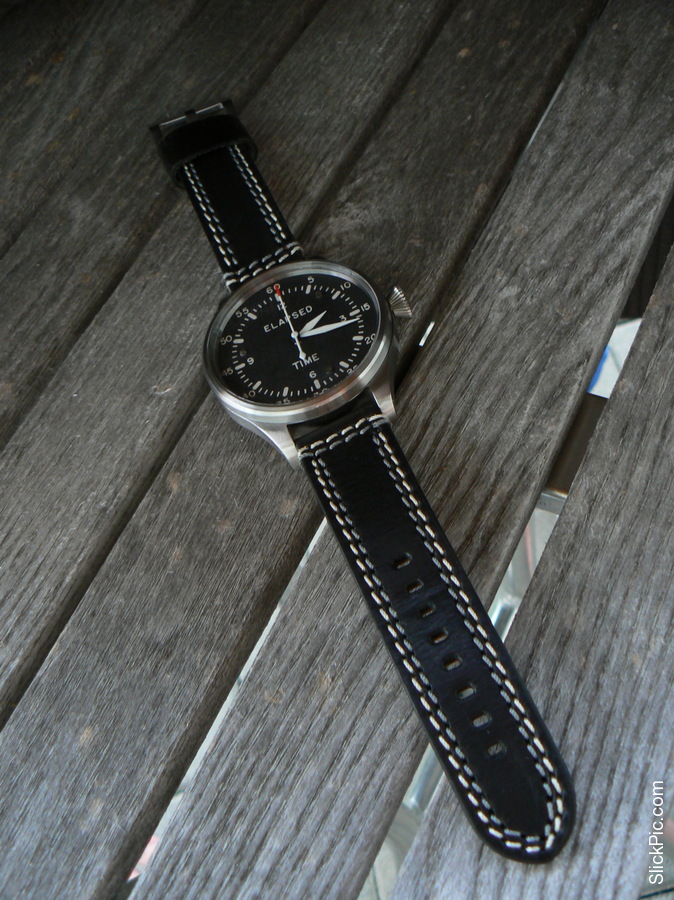
There still are quite a few things about this watch with which I'm not satisfied - some of which will (probably) be fixed by me at a later date... others are non fixeable, so I will have to just get used to them

Thank You if You had the patience to read this overlong post

And in the end a few additional photos:
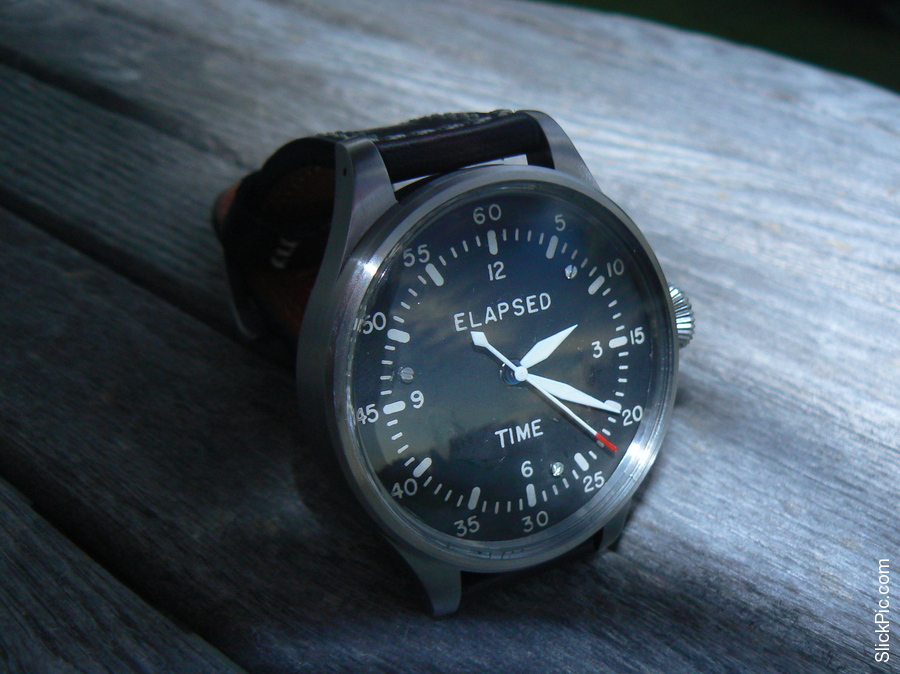
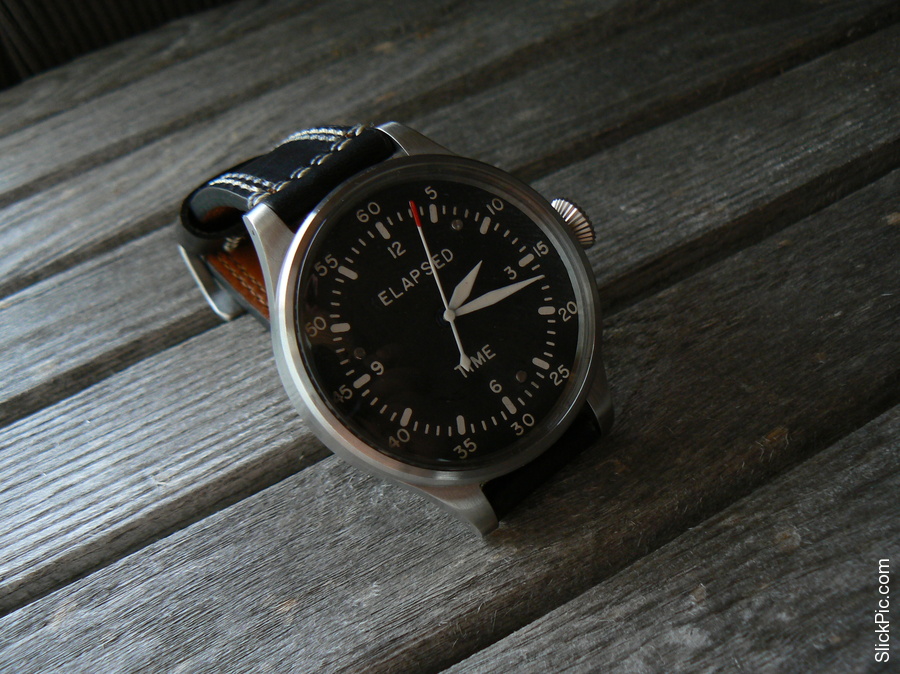
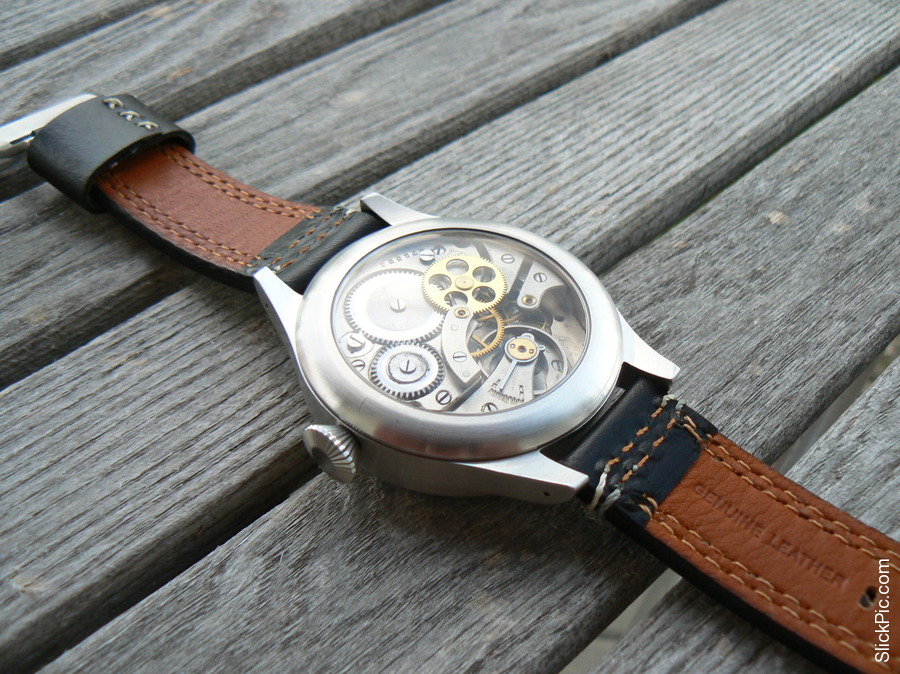
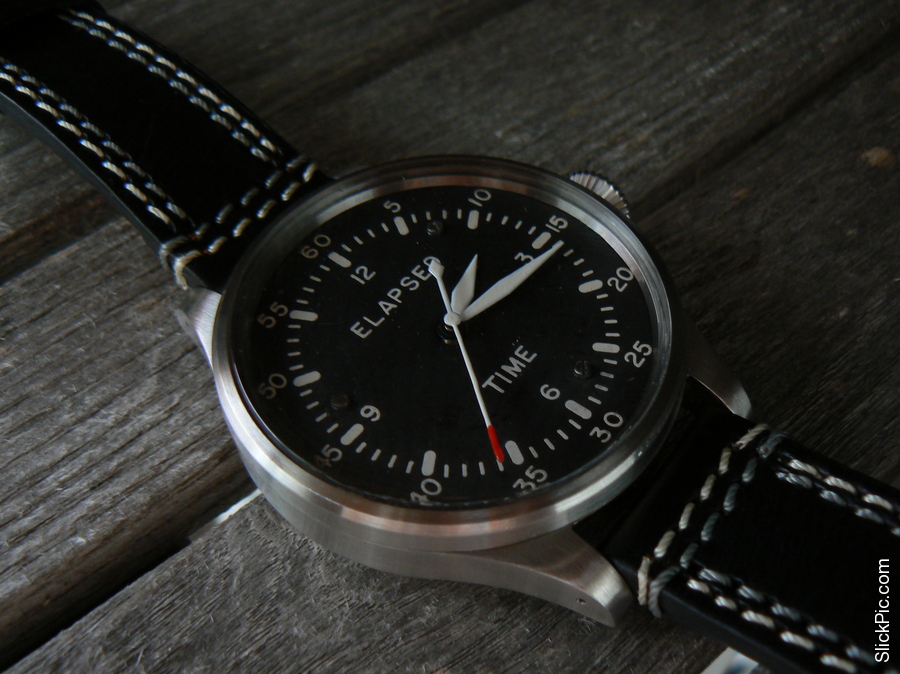
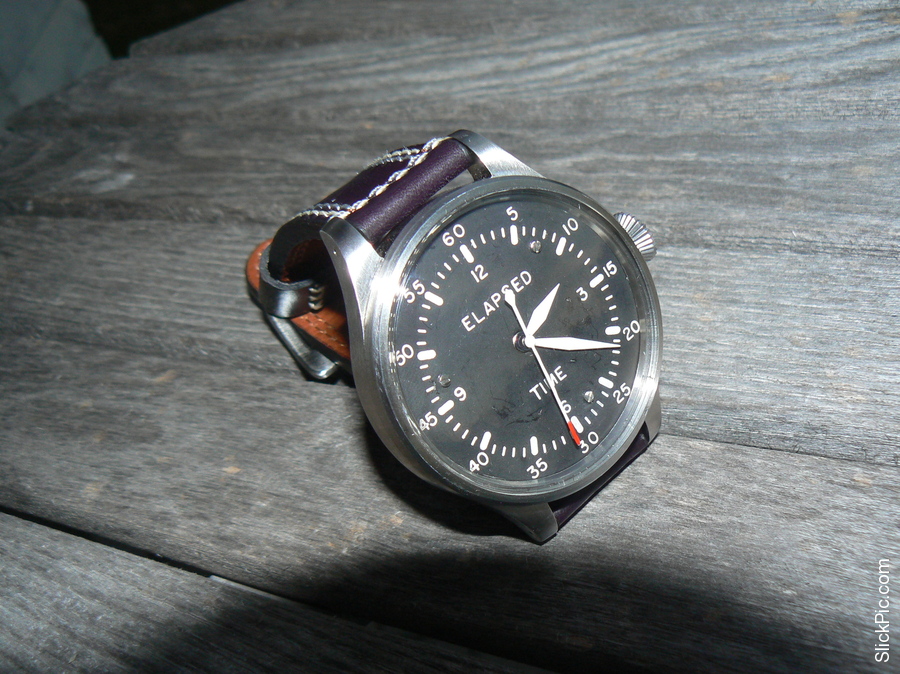
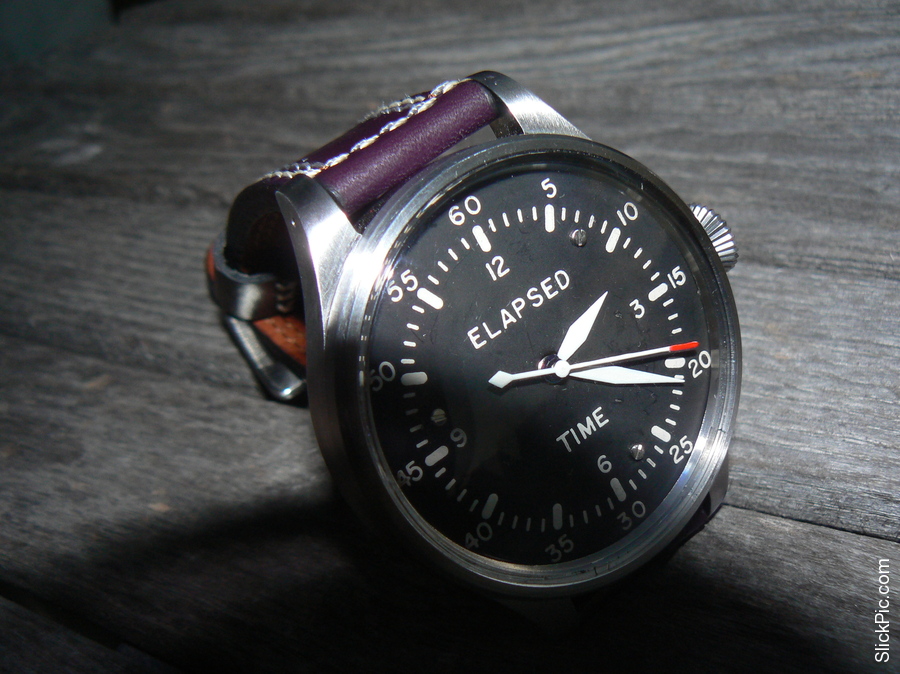
And a side profile shot of the caseback, which I forgot to take yesterday:
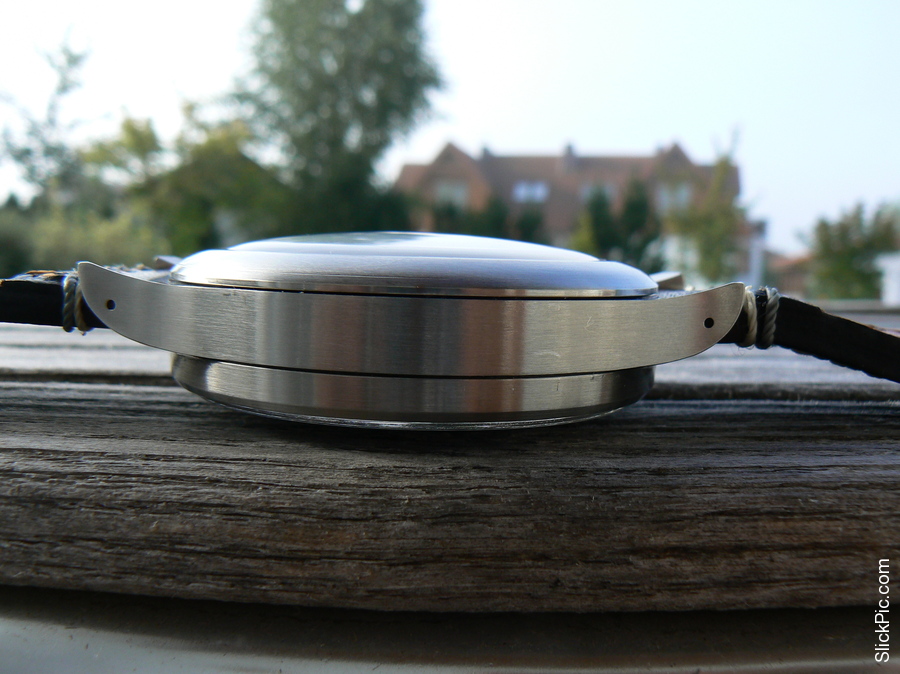
. So let me say it at the begining: I'm an addict







